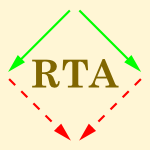324 papers:
 DAC-2015-RozicYDV #generative #performance #random
DAC-2015-RozicYDV #generative #performance #random- Highly efficient entropy extraction for true random number generators on FPGAs (VR, BY, WD, IV), p. 6.
 DATE-2015-HuangHC #algorithm #clustering #framework #multi #problem #scalability
DATE-2015-HuangHC #algorithm #clustering #framework #multi #problem #scalability- Clustering-based multi-touch algorithm framework for the tracking problem with a large number of points (SLH, SYH, CPC), pp. 719–724.
 DATE-2015-ShonikerCHP #design #process #simulation #verification
DATE-2015-ShonikerCHP #design #process #simulation #verification- Minimizing the number of process corner simulations during design verification (MS, BFC, JH, WP), pp. 289–292.
 DATE-2015-YangRMDV #embedded #framework #generative #on the fly #random #testing
DATE-2015-YangRMDV #embedded #framework #generative #on the fly #random #testing- Embedded HW/SW platform for on-the-fly testing of true random number generators (BY, VR, NM, WD, IV), pp. 345–350.
 STOC-2015-Moitra #matrix
STOC-2015-Moitra #matrix- Super-resolution, Extremal Functions and the Condition Number of Vandermonde Matrices (AM), pp. 821–830.
 CIAA-2015-GusevS #graph #on the
CIAA-2015-GusevS #graph #on the- On the Number of Synchronizing Colorings of Digraphs (VVG, MS), pp. 127–139.
 ICALP-v1-2015-KarpinskiLS #set
ICALP-v1-2015-KarpinskiLS #set- A QPTAS for the Base of the Number of Crossing-Free Structures on a Planar Point Set (MK, AL, DS), pp. 785–796.
 LATA-2015-BadkobehFL #on the #word
LATA-2015-BadkobehFL #on the #word- On the Number of Closed Factors in a Word (GB, GF, ZL), pp. 381–390.
 CHI-2015-LiOT #fault
CHI-2015-LiOT #fault- Exploring the Effect of Pre-operational Priming Intervention on Number Entry Errors (KYL, PO, HWT), pp. 1335–1344.
 SEKE-2015-ChenM #empirical #fault #predict
SEKE-2015-ChenM #empirical #fault #predict- An empirical study on predicting defect numbers (MC, YM), pp. 397–402.
 LICS-2015-AmarilliB #finite #query #strict
LICS-2015-AmarilliB #finite #query #strict- Finite Open-World Query Answering with Number Restrictions (AA, MB), pp. 305–316.
 DAC-2014-RahmanXFZST #generative #independence #named #random
DAC-2014-RahmanXFZST #generative #independence #named #random- TI-TRNG: Technology Independent True Random Number Generator (MTR, KX, DF, XZ, JS, MT), p. 6.
 SIGMOD-2014-DyresonBG #query #using
SIGMOD-2014-DyresonBG #query #using- Querying virtual hierarchies using virtual prefix-based numbers (CED, SSB, RG), pp. 791–802.
 STOC-2014-CoudronY #constant #infinity
STOC-2014-CoudronY #constant #infinity- Infinite randomness expansion with a constant number of devices (MC, HY), pp. 427–436.
 STOC-2014-EisentragerHK0 #algorithm #quantum
STOC-2014-EisentragerHK0 #algorithm #quantum- A quantum algorithm for computing the unit group of an arbitrary degree number field (KE, SH, AK, FS), pp. 293–302.
 FLOPS-2014-Parys #how #question
FLOPS-2014-Parys #how #question- How Many Numbers Can a λ-Term Contain? (PP), pp. 302–318.
 DLT-J-2013-GocRRS14 #automation #on the #word
DLT-J-2013-GocRRS14 #automation #on the #word- On the number of Abelian Bordered Words (with an Example of Automatic Theorem-Proving) (DG, NR, MR, PS), pp. 1097–1110.
 DLT-2014-FeliceN #algorithm #automaton #complexity #on the
DLT-2014-FeliceN #algorithm #automaton #complexity #on the- On the Average Complexity of Brzozowski’s Algorithm for Deterministic Automata with a Small Number of Final States (SDF, CN), pp. 25–36.
 DLT-2014-KociumakaRRW #standard #word
DLT-2014-KociumakaRRW #standard #word- Maximum Number of Distinct and Nonequivalent Nonstandard Squares in a Word (TK, JR, WR, TW), pp. 215–226.
 ICALP-v1-2014-FouqueT #generative #random
ICALP-v1-2014-FouqueT #generative #random- Close to Uniform Prime Number Generation with Fewer Random Bits (PAF, MT), pp. 991–1002.
 LATA-2014-EsparzaLS
LATA-2014-EsparzaLS- A Brief History of Strahler Numbers (JE, ML, MS), pp. 1–13.
 CHI-2014-CairnsPP #fault
CHI-2014-CairnsPP #fault- The influence of emotion on number entry errors (PAC, PP, CP), pp. 2293–2296.
 HIMI-DE-2014-FukuzumiYTYYK
HIMI-DE-2014-FukuzumiYTYYK- A New Computational Method for Single-Trial-EEG-Based BCI — Proposal of the Number of Electrodes (SF, HY, KT, TY, TY, KK), pp. 148–156.
 CIKM-2014-DingL
CIKM-2014-DingL- Model Selection with the Covering Number of the Ball of RKHS (LZD, SL), pp. 1159–1168.
 CIKM-2014-HeiseKN #clustering
CIKM-2014-HeiseKN #clustering- Estimating the Number and Sizes of Fuzzy-Duplicate Clusters (AH, GK, FN), pp. 959–968.
 ICML-c1-2014-KhaleghiR #consistency #estimation
ICML-c1-2014-KhaleghiR #consistency #estimation- Asymptotically consistent estimation of the number of change points in highly dependent time series (AK, DR), pp. 539–547.
 ICML-c1-2014-ZhangHL #heuristic #performance
ICML-c1-2014-ZhangHL #heuristic #performance- Covering Number for Efficient Heuristic-based POMDP Planning (ZZ, DH, WSL), pp. 28–36.
 ICPR-2014-AlemdarKNME #behaviour #modelling #using
ICPR-2014-AlemdarKNME #behaviour #modelling #using- A Unified Model for Human Behavior Modeling Using a Hierarchy with a Variable Number of States (HÖA, TvK, MEN, AM, CE), pp. 3804–3809.
 MLDM-2014-JiangDPL #approach #estimation #markov #optimisation #recognition
MLDM-2014-JiangDPL #approach #estimation #markov #optimisation #recognition- Modified Bootstrap Approach with State Number Optimization for Hidden Markov Model Estimation in Small-Size Printed Arabic Text Line Recognition (ZJ, XD, LP, CL), pp. 437–441.
 OOPSLA-2014-SteeleLF #generative #performance #pseudo
OOPSLA-2014-SteeleLF #generative #performance #pseudo- Fast splittable pseudorandom number generators (GLSJ, DL, CHF), pp. 453–472.
 PPDP-2014-Tarau #encoding
PPDP-2014-Tarau #encoding- Bijective Collection Encodings and Boolean Operations with Hereditarily Binary Natural Numbers (PT), pp. 31–42.
 PADL-2014-Tarau #declarative #specification
PADL-2014-Tarau #declarative #specification- A Declarative Specification of Giant Number Arithmetic (PT), pp. 120–135.
 SAC-2014-NabeezathP #algorithm #detection #performance
SAC-2014-NabeezathP #algorithm #detection #performance- Global value numbering for redundancy detection: a simple and efficient algorithm (SN, VP), pp. 1609–1611.
 SAC-2014-TarauB #algorithm
SAC-2014-TarauB #algorithm- Arithmetic algorithms for hereditarily binary natural numbers (PT, BPB), pp. 1593–1600.
 CAV-2014-CoxCS #abstraction #library #named #parametricity #reuse #set
CAV-2014-CoxCS #abstraction #library #named #parametricity #reuse #set- QUICr: A Reusable Library for Parametric Abstraction of Sets and Numbers (AC, BYEC, SS), pp. 866–873.
 ICTSS-2014-DwarakanathJ #test coverage
ICTSS-2014-DwarakanathJ #test coverage- Minimum Number of Test Paths for Prime Path and Other Structural Coverage Criteria (AD, AJ), pp. 63–79.
 LICS-CSL-2014-KreutzerS #on the
LICS-CSL-2014-KreutzerS #on the- On Hanf-equivalence and the number of embeddings of small induced subgraphs (SK, NS), p. 10.
 RTA-TLCA-2014-EscardoS #data type #type system
RTA-TLCA-2014-EscardoS #data type #type system- Abstract Datatypes for Real Numbers in Type Theory (MHE, AS), pp. 208–223.
 SAT-2014-FeketeC #constraints #pseudo
SAT-2014-FeketeC #constraints #pseudo- Simplifying Pseudo-Boolean Constraints in Residual Number Systems (YF, MC), pp. 351–366.
 DATE-2013-RustLP #architecture #complexity #using
DATE-2013-RustLP #architecture #complexity #using- Low complexity QR-decomposition architecture using the logarithmic number system (JR, FL, SP), pp. 97–102.
 ICDAR-2013-FengRZS
ICDAR-2013-FengRZS- Extraction of Serial Numbers on Bank Notes (BYF, MR, XYZ, CYS), pp. 698–702.
 ICDAR-2013-KunzeKYK #documentation #eye tracking #image #mobile #retrieval #using #word
ICDAR-2013-KunzeKYK #documentation #eye tracking #image #mobile #retrieval #using #word- The Wordometer — Estimating the Number of Words Read Using Document Image Retrieval and Mobile Eye Tracking (KK, HK, KY, KK), pp. 25–29.
 SCAM-2013-Baca
SCAM-2013-Baca- Tracing with a minimal number of probes (DB), pp. 74–83.
 DLT-2013-RampersadRS #on the #word
DLT-2013-RampersadRS #on the #word- On the Number of Abelian Bordered Words (NR, MR, PS), pp. 420–432.
 LATA-2013-GocMS #on the
LATA-2013-GocMS #on the- On the Number of Unbordered Factors (DG, HM, JS), pp. 299–310.
 ICLP-J-2013-Tarau #prolog
ICLP-J-2013-Tarau #prolog- Compact serialization of Prolog terms (with catalan skeletons, cantor tupling and Gödel numberings) (PT), pp. 847–861.
 ICST-2013-Roper #fault #testing
ICST-2013-Roper #fault #testing- Estimating Fault Numbers Remaining After Testing (MR), pp. 272–281.
 SAT-2013-Clarke #why
SAT-2013-Clarke #why- Turing’s Computable Real Numbers and Why They Are Still Important Today (EMC), p. 18.
 DATE-2012-VeljkovicRV #generative #implementation #low cost #on the fly #random #testing
DATE-2012-VeljkovicRV #generative #implementation #low cost #on the fly #random #testing- Low-cost implementations of on-the-fly tests for random number generators (FV, VR, IV), pp. 959–964.
 SIGMOD-2012-YuAY #query #scalability
SIGMOD-2012-YuAY #query #scalability- Processing a large number of continuous preference top-k queries (AY, PKA, JY), pp. 397–408.
 ITiCSE-2012-FeasterAH #education
ITiCSE-2012-FeasterAH #education- Serious toys: teaching the binary number system (YF, FA, JOH), pp. 262–267.
 ITiCSE-2012-Patitsas #education #generative #pseudo
ITiCSE-2012-Patitsas #education #generative #pseudo- Teaching labs on pseudorandom number generation (EAP), p. 376.
 STOC-2012-VaziraniV #generative #quantum #random
STOC-2012-VaziraniV #generative #quantum #random- Certifiable quantum dice: or, true random number generation secure against quantum adversaries (UVV, TV), pp. 61–76.
 CIAA-2012-HeamHK #bound #constraints #on the
CIAA-2012-HeamHK #bound #constraints #on the- On Positive TAGED with a Bounded Number of Constraints (PCH, VH, OK), pp. 329–336.
 ICALP-v1-2012-Marx #bound #multi
ICALP-v1-2012-Marx #bound #multi- A Tight Lower Bound for Planar Multiway Cut with Fixed Number of Terminals (DM), pp. 677–688.
 LATA-2012-RowlandS #set
LATA-2012-RowlandS #set- k-Automatic Sets of Rational Numbers (ER, JS), pp. 490–501.
 ICPR-2012-HeCS #algorithm #component
ICPR-2012-HeCS #algorithm #component- A new algorithm for labeling connected-components and calculating the Euler number, connected-component number, and hole number (LH, YC, KS), pp. 3099–3102.
 ICPR-2012-JiangDPL #word
ICPR-2012-JiangDPL #word- Analyzing the information entropy of states to optimize the number of states in an HMM-based off-line handwritten Arabic word recognizer (ZJ, XD, LP, CL), pp. 697–700.
 ICPR-2012-SermanetCL #classification #network
ICPR-2012-SermanetCL #classification #network- Convolutional neural networks applied to house numbers digit classification (PS, SC, YL), pp. 3288–3291.
 SAC-2012-FariaBGC #algorithm #clustering #data type
SAC-2012-FariaBGC #algorithm #clustering #data type- Improving the offline clustering stage of data stream algorithms in scenarios with variable number of clusters (ERF, RCB, JG, ACPLFC), pp. 829–830.
 OSDI-2012-WolinskyCFJ
OSDI-2012-WolinskyCFJ- Dissent in Numbers: Making Strong Anonymity Scale (DIW, HCG, BF, AJ), pp. 179–182.
 PPoPP-2012-LeisersonSS #generative #parallel #thread
PPoPP-2012-LeisersonSS #generative #parallel #thread- Deterministic parallel random-number generation for dynamic-multithreading platforms (CEL, TBS, JS), pp. 193–204.
 CAV-2012-SinghG
CAV-2012-SinghG- Synthesizing Number Transformations from Input-Output Examples (RS, SG), pp. 634–651.
 ICST-2012-Oriol #evaluation #fault #random testing #testing
ICST-2012-Oriol #evaluation #fault #random testing #testing- Random Testing: Evaluation of a Law Describing the Number of Faults Found (MO), pp. 201–210.
 SAT-2012-CrowstonGJRSY #parametricity
SAT-2012-CrowstonGJRSY #parametricity- Fixed-Parameter Tractability of Satisfying beyond the Number of Variables (RC, GG, MJ, VR, SS, AY), pp. 355–368.
 DATE-2011-BernardC #power management
DATE-2011-BernardC #power management- A low-power VLIW processor for 3GPP-LTE complex numbers processing (CB, FC), pp. 234–239.
 DATE-2011-LuPRR #energy #optimisation
DATE-2011-LuPRR #energy #optimisation- Stage number optimization for switched capacitor power converters in micro-scale energy harvesting (CL, SPP, VR, KR), pp. 770–775.
 DATE-2011-WilleKD #scalability
DATE-2011-WilleKD #scalability- Determining the minimal number of lines for large reversible circuits (RW, OK, RD), pp. 1204–1207.
 ICDAR-2011-GatosLS #performance #reduction
ICDAR-2011-GatosLS #performance #reduction- Greek Polytonic OCR Based on Efficient Character Class Number Reduction (BG, GL, NS), pp. 1155–1159.
 ICDAR-2011-ZhuN11a #classification #online #recognition #scalability
ICDAR-2011-ZhuN11a #classification #online #recognition #scalability- A Coarse Classifier Construction Method from a Large Number of Basic Recognizers for On-line Recognition of Handwritten Japanese Characters (BZ, MN), pp. 1090–1094.
 STOC-2011-Chuzhoy #algorithm #graph #problem
STOC-2011-Chuzhoy #algorithm #graph #problem- An algorithm for the graph crossing number problem (JC), pp. 303–312.
 DLT-J-2009-Jiraskova11
DLT-J-2009-Jiraskova11- Magic Numbers and Ternary Alphabet (GJ), pp. 331–344.
 DLT-J-2009-LehtinenO11 #equation #on the #set
DLT-J-2009-LehtinenO11 #equation #on the #set- On Equations over Sets of Numbers and their Limitations (TL, AO), pp. 377–393.
 ICALP-v1-2011-ChimaniH #approximate
ICALP-v1-2011-ChimaniH #approximate- A Tighter Insertion-Based Approximation of the Crossing Number (MC, PH), pp. 122–134.
 ICEIS-J-2011-BrasilSFSC11a #approach #multi #optimisation #release planning #requirements
ICEIS-J-2011-BrasilSFSC11a #approach #multi #optimisation #release planning #requirements- A Multiobjective Optimization Approach to the Software Release Planning with Undefined Number of Releases and Interdependent Requirements (MMAB, TGNdS, FGdF, JTdS, MIC), pp. 300–314.
 ICEIS-v1-2011-LiX
ICEIS-v1-2011-LiX- A Method of Adjusting the Number of Replica Dynamically in HDFS (BL, KX), pp. 529–533.
 ICEIS-v3-2011-BrasilSFSC #multi #release planning #requirements
ICEIS-v3-2011-BrasilSFSC #multi #release planning #requirements- Multiobjective Software Release Planning with Dependent Requirements and Undefined Number of Releases (MMAB, TGNdS, FGdF, JTdS, MIC), pp. 97–107.
 KDD-2011-MetwallyP
KDD-2011-MetwallyP- Estimating the number of users behind ip addresses for combating abusive traffic (AM, MP), pp. 249–257.
 KDIR-2011-AlvarezCLP #web
KDIR-2011-AlvarezCLP #web- The Spanish Web in Numbers — Main Features of the Spanish Hidden Web (MÁ, FC, RLG, VMP), pp. 371–374.
 DAC-2010-WilleSD
DAC-2010-WilleSD- Reducing the number of lines in reversible circuits (RW, MS, RD), pp. 647–652.
 DRR-2010-Dejean #detection #documentation #sequence
DRR-2010-Dejean #detection #documentation #sequence- Numbered sequence detection in documents (HD), pp. 1–10.
 DRR-2010-KimLT #classification #naive bayes #online
DRR-2010-KimLT #classification #naive bayes #online- Naïve Bayes and SVM classifiers for classifying databank accession number sentences from online biomedical articles (JK, DXL, GRT), pp. 1–10.
 MSR-2010-BachmannB #correlation #dataset #debugging #process #quality #re-engineering
MSR-2010-BachmannB #correlation #dataset #debugging #process #quality #re-engineering- When process data quality affects the number of bugs: Correlations in software engineering datasets (AB, AB), pp. 62–71.
 SCAM-2010-GrantC #analysis #concept #source code
SCAM-2010-GrantC #analysis #concept #source code- Estimating the Optimal Number of Latent Concepts in Source Code Analysis (SG, JRC), pp. 65–74.
 PLDI-2010-Loitsch #float #integer
PLDI-2010-Loitsch #float #integer- Printing floating-point numbers quickly and accurately with integers (FL), pp. 233–243.
 DLT-J-2008-CrochemoreFIJ10 #string
DLT-J-2008-CrochemoreFIJ10 #string- Number of Occurrences of powers in Strings (MC, SZF, CSI, IJ), pp. 535–547.
 DLT-2010-BremerF #bound #problem
DLT-2010-BremerF #bound #problem- Inclusion Problems for Patterns with a Bounded Number of Variables (JB, DDF), pp. 100–111.
 DLT-2010-BrodaMMR #automaton #on the
DLT-2010-BrodaMMR #automaton #on the- On the Average Number of States of Partial Derivative Automata (SB, AM, NM, RR), pp. 112–123.
 DLT-2010-Rigo #formal method
DLT-2010-Rigo #formal method- Numeration Systems: A Link between Number Theory and Formal Language Theory (MR), pp. 33–53.
 LATA-2010-CrochemoreIKRRW #on the #polynomial #string
LATA-2010-CrochemoreIKRRW #on the #polynomial #string- On the Maximal Number of Cubic Runs in a String (MC, CSI, MK, JR, WR, TW), pp. 227–238.
 ICEIS-AIDSS-2010-SilvaCRN #assessment #fault #identification #network
ICEIS-AIDSS-2010-SilvaCRN #assessment #fault #identification #network- Assessment of the Change in the Number of Neurons in Hidden Layers of Neural Networks for Fault Identification in Electrical Systems (DTdS, PHGC, JAPR, LBN), pp. 309–313.
 ICPR-2010-CapitaineF10a #clustering #image #on the #segmentation
ICPR-2010-CapitaineF10a #clustering #image #on the #segmentation- On Selecting an Optimal Number of Clusters for Color Image Segmentation (HLC, CF), pp. 3388–3391.
 KDIR-2010-NakanoY #induction
KDIR-2010-NakanoY #induction- Number Theory-based Induction of Deterministic Context-free L-system Grammar (RN, NY), pp. 194–199.
 SAT-2010-Kullmann #satisfiability
SAT-2010-Kullmann #satisfiability- Green-Tao Numbers and SAT (OK), pp. 352–362.
 CASE-2009-BermanK #abstraction #algorithm #assembly #scalability
CASE-2009-BermanK #abstraction #algorithm #assembly #scalability- Abstractions and algorithms for assembly tasks with large numbers of robots and parts (SB, VK), pp. 25–28.
 DATE-2009-LangenJ
DATE-2009-LangenJ- Limiting the number of dirty cache lines (PJdL, BHHJ), pp. 670–675.
 DLT-2009-Jiraskova
DLT-2009-Jiraskova- Magic Numbers and Ternary Alphabet (GJ), pp. 300–311.
 DLT-2009-LehtinenO #equation #on the #set
DLT-2009-LehtinenO #equation #on the #set- On Equations over Sets of Numbers and Their Limitations (TL, AO), pp. 360–371.
 ICALP-v1-2009-Jansen #constant #scheduling #using
ICALP-v1-2009-Jansen #constant #scheduling #using- An EPTAS for Scheduling Jobs on Uniform Processors: Using an MILP Relaxation with a Constant Number of Integral Variables (KJ), pp. 562–573.
 ICALP-v1-2009-ValleeCFF
ICALP-v1-2009-ValleeCFF- The Number of Symbol Comparisons in QuickSort and QuickSelect (BV, JC, JAF, PF), pp. 750–763.
 LATA-2009-Ollinger
LATA-2009-Ollinger- Tiling the Plane with a Fixed Number of Polyominoes (NO), pp. 638–647.
 SEFM-2009-BresolinGMS #constraints #integer #logic
SEFM-2009-BresolinGMS #constraints #integer #logic- Right Propositional Neighborhood Logic over Natural Numbers with Integer Constraints for Interval Lengths (DB, VG, AM, GS), pp. 240–249.
 SAC-2009-ParkYAMP #algorithm #approach #detection #novel #search-based #segmentation #using
SAC-2009-ParkYAMP #algorithm #approach #detection #novel #search-based #segmentation #using- A novel approach to detect copy number variation using segmentation and genetic algorithm (CP, YY, JA, MM, SP), pp. 788–792.
 CADE-2009-BoigelotBL #automaton #theorem
CADE-2009-BoigelotBL #automaton #theorem- A Generalization of Semenov’s Theorem to Automata over Real Numbers (BB, JB, JL), pp. 469–484.
 ICST-2009-WaliaC #fault #modelling
ICST-2009-WaliaC #fault #modelling- Evaluating the Effect of the Number of Naturally Occurring Faults on the Estimates Produced by Capture-Recapture Models (GSW, JCC), pp. 210–219.
 RTA-2009-BursucC #algebra #bound #protocol #security
RTA-2009-BursucC #algebra #bound #protocol #security- Protocol Security and Algebraic Properties: Decision Results for a Bounded Number of Sessions (SB, HCL), pp. 133–147.
 DRR-2008-DejeanM #analysis
DRR-2008-DejeanM #analysis- Versatile page numbering analysis (HD, JLM), p. 68150.
 VLDB-2008-SansL #xml
VLDB-2008-SansL #xml- Prefix based numbering schemes for XML: techniques, applications and performances (VS, DL), pp. 1564–1573.
 CIAA-2008-BaturoPR #word
CIAA-2008-BaturoPR #word- The Number of Runs in Sturmian Words (PB, MP, WR), pp. 252–261.
 ICALP-B-2008-BoigelotBB #automaton #finite #multi #on the #set
ICALP-B-2008-BoigelotBB #automaton #finite #multi #on the #set- On the Sets of Real Numbers Recognized by Finite Automata in Multiple Bases (BB, JB, VB), pp. 112–123.
 ICALP-B-2008-JezO #equation #on the #set
ICALP-B-2008-JezO #equation #on the #set- On the Computational Completeness of Equations over Sets of Natural Numbers (AJ, AO), pp. 63–74.
 ICEIS-AIDSS-2008-Martinsky #recognition
ICEIS-AIDSS-2008-Martinsky #recognition- Recognition of Vehicle Number Plates (OM), pp. 136–140.
 ICEIS-DISI-2008-SousaL #approach #enterprise
ICEIS-DISI-2008-SousaL #approach #enterprise- ERP Impact on Number of Employees and Personnel Costs in Small and Medium Sized Enterprises — A Panel Data Approach (JES, VBL), pp. 196–202.
 CIKM-2008-KarnstedtSHHSS #database #query
CIKM-2008-KarnstedtSHHSS #database #query- Estimating the number of answers with guarantees for structured queries in p2p databases (MK, KUS, MH, MH, BS, RS), pp. 1407–1408.
 ICPR-2008-AraiMKH #geometry #people #sequence #video
ICPR-2008-AraiMKH #geometry #people #sequence #video- Estimating the number of people in a video sequence via geometrical model (HA, IM, HK, MH), pp. 1–4.
 ICPR-2008-WangLLSX #adaptation #automation #video #word
ICPR-2008-WangLLSX #adaptation #automation #video #word- Automatic video annotation with adaptive number of key words (FW, WL, JL, MS, DX), pp. 1–4.
 KR-2008-SchroderP #how #logic #strict
KR-2008-SchroderP #how #logic #strict- How Many Toes Do I Have? Parthood and Number Restrictions in Description Logics (LS, DP), pp. 307–317.
 SEKE-2008-LiuLZL #logic #protocol #security
SEKE-2008-LiuLZL #logic #protocol #security- Supremum of Agent Number Needed in Analyzing Security Protocols Based on Horn Logic (FL, ZL, TZ, ML), pp. 795–801.
 SAC-2008-MitrofanovaM #evolution #modelling #simulation
SAC-2008-MitrofanovaM #evolution #modelling #simulation- Population genetics of human copy number variations: models and simulation of their evolution along and across the genomes (AM, BM), pp. 1309–1310.
 ICSE-2008-WaliaCN #fault #modelling
ICSE-2008-WaliaCN #fault #modelling- The effect of the number of inspectors on the defect estimates produced by capture-recapture models (GSW, JCC, NN), pp. 331–340.
 CSL-2008-Nguyen #proving #using
CSL-2008-Nguyen #proving #using- Proving Infinitude of Prime Numbers Using Binomial Coefficients (PN), pp. 184–198.
 ICST-2008-BousquetS #inheritance
ICST-2008-BousquetS #inheritance- Relation between Depth of Inheritance Tree and Number of Methods to Test (LdB, MRS), pp. 161–170.
 RTA-2008-FalkeK #data type #dependence #semantics
RTA-2008-FalkeK #data type #dependence #semantics- Dependency Pairs for Rewriting with Built-In Numbers and Semantic Data Structures (SF, DK), pp. 94–109.
 ITiCSE-2007-Rubio-SanchezH #fibonacci #recursion
ITiCSE-2007-Rubio-SanchezH #fibonacci #recursion- Exploring recursion with fibonacci numbers (MRS, IHL), p. 359.
 MSR-2007-HerraizGR07a #analysis #eclipse #using
MSR-2007-HerraizGR07a #analysis #eclipse #using- Forecasting the Number of Changes in Eclipse Using Time Series Analysis (IH, JMGB, GR), p. 32.
 SAS-2007-GoubaultP #approximate
SAS-2007-GoubaultP #approximate- Under-Approximations of Computations in Real Numbers Based on Generalized Affine Arithmetic (EG, SP), pp. 137–152.
 STOC-2007-KawarabayashiR #linear
STOC-2007-KawarabayashiR #linear- Computing crossing number in linear time (KiK, BAR), pp. 382–390.
 STOC-2007-VuT #matrix
STOC-2007-VuT #matrix- The condition number of a randomly perturbed matrix (VHV, TT), pp. 248–255.
 DLT-2007-Sakarovitch #automaton #finite
DLT-2007-Sakarovitch #automaton #finite- Finite Automata and the Writing of Numbers (JS), pp. 29–30.
 ICALP-2007-BoigelotB #automaton #theorem
ICALP-2007-BoigelotB #automaton #theorem- A Generalization of Cobham’s Theorem to Automata over Real Numbers (BB, JB), pp. 813–824.
 ICALP-2007-Coja-OghlanPS #graph #on the #random
ICALP-2007-Coja-OghlanPS #graph #on the #random- On the Chromatic Number of Random Graphs (ACO, KP, AS), pp. 777–788.
 LATA-2007-BoldiLRS
LATA-2007-BoldiLRS- The Number of Convex Permutominoes (PB, VL, RR, MS), pp. 151–162.
 ICEIS-AIDSS-2007-AlevizosKPSB #fuzzy #information retrieval #multi
ICEIS-AIDSS-2007-AlevizosKPSB #fuzzy #information retrieval #multi- Fuzzy Interval Number (FIN) Techniques for Multilingual and Cross Language Information Retrieval (TA, VGK, SEP, CS, PB), pp. 348–355.
 ICML-2007-TsampoukaS #algorithm #approximate
ICML-2007-TsampoukaS #algorithm #approximate- Approximate maximum margin algorithms with rules controlled by the number of mistakes (PT, JST), pp. 903–910.
 KDD-2007-MoserGE #analysis #clustering #specification
KDD-2007-MoserGE #analysis #clustering #specification- Joint cluster analysis of attribute and relationship data withouta-priori specification of the number of clusters (FM, RG, ME), pp. 510–519.
 MLDM-2007-KyrgyzovKMC #clustering #kernel
MLDM-2007-KyrgyzovKMC #clustering #kernel- Kernel MDL to Determine the Number of Clusters (IOK, OOK, HM, MC), pp. 203–217.
 SEKE-2007-CangussuCW #component #evaluation #performance #testing
SEKE-2007-CangussuCW #component #evaluation #performance #testing- Reducing the Number of Test Cases for Performance Evaluation of Components (JWC, KMLC, WEW), pp. 145–150.
 POPL-2007-VaswaniNC #profiling
POPL-2007-VaswaniNC #profiling- Preferential path profiling: compactly numbering interesting paths (KV, AVN, TMC), pp. 351–362.
 ESEC-FSE-2007-NgoT #detection #scalability
ESEC-FSE-2007-NgoT #detection #scalability- Detecting large number of infeasible paths through recognizing their patterns (MNN, HBKT), pp. 215–224.
 CADE-2007-Harrison #automation #proving #using
CADE-2007-Harrison #automation #proving #using- Automating Elementary Number-Theoretic Proofs Using Gröbner Bases (JH), pp. 51–66.
 ITiCSE-2006-Nau #random
ITiCSE-2006-Nau #random- A random number (RWN), p. 345.
 CSMR-2006-HerraizRG #analysis #comparison #evolution #metric
CSMR-2006-HerraizRG #analysis #comparison #evolution #metric- Comparison between SLOCs and number of files as size metrics for software evolution analysis (IH, GR, JMGB), pp. 206–213.
 STOC-2006-AroraC #approximate
STOC-2006-AroraC #approximate- New approximation guarantee for chromatic number (SA, EC), pp. 215–224.
 STOC-2006-KawarabayashiM #approximate #graph
STOC-2006-KawarabayashiM #approximate #graph- Approximating the list-chromatic number and the chromatic number in minor-closed and odd-minor-closed classes of graphs (KiK, BM), pp. 401–416.
 STOC-2006-Rao #constant #independence
STOC-2006-Rao #constant #independence- Extractors for a constant number of polynomially small min-entropy independent sources (AR), pp. 497–506.
 STOC-2006-Zuckerman #clique #linear
STOC-2006-Zuckerman #clique #linear- Linear degree extractors and the inapproximability of max clique and chromatic number (DZ), pp. 681–690.
 ICALP-v1-2006-BjorklundH #algorithm #satisfiability
ICALP-v1-2006-BjorklundH #algorithm #satisfiability- Exact Algorithms for Exact Satisfiability and Number of Perfect Matchings (AB, TH), pp. 548–559.
 ICALP-v1-2006-DjidjevV #graph
ICALP-v1-2006-DjidjevV #graph- Planar Crossing Numbers of Genus g Graphs (HD, IV), pp. 419–430.
 ICALP-v1-2006-KhotP #clique
ICALP-v1-2006-KhotP #clique- Better Inapproximability Results for MaxClique, Chromatic Number and Min-3Lin-Deletion (SK, AKP), pp. 226–237.
 ICEIS-AIDSS-2006-MarinagiAKS #fuzzy #information retrieval
ICEIS-AIDSS-2006-MarinagiAKS #fuzzy #information retrieval- Fuzzy Interval Number (FIN) Techniques for Cross Language Information Retrieval (CM, TA, VGK, CS), pp. 249–256.
 ICPR-v1-2006-CastelanH06a #statistics
ICPR-v1-2006-CastelanH06a #statistics- A Facial Statistical Model from Complex Numbers (MC, ERH), pp. 235–238.
 ICPR-v3-2006-WangWKH #probability #using #video
ICPR-v3-2006-WangWKH #probability #using #video- Tracking a Variable Number of Human Groups in Video Using Probability Hypothesis Density (YDW, JKW, AAK, WH), pp. 1127–1130.
 CSL-2006-RabinovichT #decidability
CSL-2006-RabinovichT #decidability- Decidable Theories of the Ordering of Natural Numbers with Unary Predicates (AMR, WT), pp. 562–574.
 IJCAR-2006-GregoireT #composition #functional #library #scalability
IJCAR-2006-GregoireT #composition #functional #library #scalability- A Purely Functional Library for Modular Arithmetic and Its Application to Certifying Large Prime Numbers (BG, LT), pp. 423–437.
 SAT-2006-Gelder #metric #proving
SAT-2006-Gelder #metric #proving- Preliminary Report on Input Cover Number as a Metric for Propositional Resolution Proofs (AVG), pp. 48–53.
 DAC-2005-VolkerinkM #architecture #using
DAC-2005-VolkerinkM #architecture #using- Response compaction with any number of unknowns using a new LFSR architecture (EHV, SM), pp. 117–122.
 STOC-2005-Basu #algebra #algorithm #polynomial #set
STOC-2005-Basu #algebra #algorithm #polynomial #set- Polynomial time algorithm for computing the top Betti numbers of semi-algebraic sets defined by quadratic inequalities (SB), pp. 313–322.
 STOC-2005-BasuPR #algebra #component #set
STOC-2005-BasuPR #algebra #component #set- Computing the first Betti number and the connected components of semi-algebraic sets (SB, RP, MFR), pp. 304–312.
 STOC-2005-Hallgren #algorithm #performance #quantum
STOC-2005-Hallgren #algorithm #performance #quantum- Fast quantum algorithms for computing the unit group and class group of a number field (SH), pp. 468–474.
 STOC-2005-SchmidtV #algorithm #polynomial #quantum
STOC-2005-SchmidtV #algorithm #polynomial #quantum- Polynomial time quantum algorithm for the computation of the unit group of a number field (AS, UV), pp. 475–480.
 CIAA-2005-Latour #diagrams #set
CIAA-2005-Latour #diagrams #set- Computing Affine Hulls over Q and Z from Sets Represented by Number Decision Diagrams (LL), pp. 213–224.
 DLT-2005-AlhazovFO
DLT-2005-AlhazovFO- Tissue P Systems with Antiport Rules and Small Numbers of Symbols and Cells (AA, RF, MO), pp. 100–111.
 ICALP-2005-LinRTW #exponential #fibonacci
ICALP-2005-LinRTW #exponential #fibonacci- Braess’s Paradox, Fibonacci Numbers, and Exponential Inapproximability (HCL, TR, ÉT, AW), pp. 497–512.
 FM-2005-BanachPJS #finite #sequence
FM-2005-BanachPJS #finite #sequence- Retrenching the Purse: Finite Sequence Numbers, and the Tower Pattern (RB, MP, CJ, SS), pp. 382–398.
 CIKM-2005-GatesTC #taxonomy
CIKM-2005-GatesTC #taxonomy- Taxonomies by the numbers: building high-performance taxonomies (SCG, WT, KSFC), pp. 568–577.
 CIKM-2005-YuZS #set #towards
CIKM-2005-YuZS #set #towards- Towards estimating the number of distinct value combinations for a set of attributes (XY, CZ, KCS), pp. 656–663.
 MLDM-2005-Boulle #category theory #scalability
MLDM-2005-Boulle #category theory #scalability- A Grouping Method for Categorical Attributes Having Very Large Number of Values (MB), pp. 228–242.
 MLDM-2005-MakrehchiK #classification #using
MLDM-2005-MakrehchiK #classification #using- Text Classification Using Small Number of Features (MM, MSK), pp. 580–589.
 LICS-2005-Leroux #diagrams #polynomial #synthesis
LICS-2005-Leroux #diagrams #polynomial #synthesis- A Polynomial Time Presburger Criterion and Synthesis for Number Decision Diagrams (JL), pp. 147–156.
 SAT-2005-Wahlstrom #performance #satisfiability
SAT-2005-Wahlstrom #performance #satisfiability- Faster Exact Solving of SAT Formulae with a Low Number of Occurrences per Variable (MW), pp. 309–323.
 DATE-v2-2004-DengW #algorithm
DATE-v2-2004-DengW #algorithm- Optimal Algorithm for Minimizing the Number of Twists in an On-Chip Bus (LD, MDFW), pp. 1104–1109.
 DATE-v2-2004-Feldmann #linear #order #reduction #scalability
DATE-v2-2004-Feldmann #linear #order #reduction #scalability- Model Order Reduction Techniques for Linear Systems with Large Numbers of Terminals (PF), pp. 944–947.
 WCRE-2004-MohanGL #approach #complexity #concept #using
WCRE-2004-MohanGL #approach #complexity #concept #using- An Initial Approach to Assessing Program Comprehensibility Using Spatial Complexity, Number of Concepts and Typographical Style (AM, NG, PJL), pp. 246–255.
 SAS-2004-GulwaniN #algorithm #polynomial
SAS-2004-GulwaniN #algorithm #polynomial- A Polynomial-Time Algorithm for Global Value Numbering (SG, GCN), pp. 212–227.
 STOC-2004-AchlioptasN #graph #random
STOC-2004-AchlioptasN #graph #random- The two possible values of the chromatic number of a random graph (DA, AN), pp. 587–593.
 CIAA-2004-Zijl #difference #symmetry
CIAA-2004-Zijl #difference #symmetry- Magic Numbers for Symmetric Difference NFAs (LvZ), pp. 333–334.
 ICALP-2004-BournezH
ICALP-2004-BournezH- An Analog Characterization of Elementarily Computable Functions over the Real Numbers (OB, EH), pp. 269–280.
 ICFP-2004-GauthierP #canonical #first-order #higher-order #matter #recursion
ICFP-2004-GauthierP #canonical #first-order #higher-order #matter #recursion- Numbering matters: first-order canonical forms for second-order recursive types (NG, FP), pp. 150–161.
 KDD-2004-KalagnanamSVPW #automation
KDD-2004-KalagnanamSVPW #automation- A system for automated mapping of bill-of-materials part numbers (JK, MS, SV, MP, YWW), pp. 805–810.
 SIGIR-2004-MontgomerySCE #analysis #documentation #empirical #feedback
SIGIR-2004-MontgomerySCE #analysis #documentation #empirical #feedback- Effect of varying number of documents in blind feedback: analysis of the 2003 NRRC RIA workshop “bf_numdocs” experiment suite (JM, LS, JC, DAE), pp. 476–477.
 POPL-2004-GulwaniN #random #using
POPL-2004-GulwaniN #random #using- Global value numbering using random interpretation (SG, GCN), pp. 342–352.
 SAC-2004-BaggioWE #scheduling #workflow
SAC-2004-BaggioWE #scheduling #workflow- Applying scheduling techniques to minimize the number of late jobs in workflow systems (GB, JW, CAE), pp. 1396–1403.
 HPCA-2004-KharbutliISL #using
HPCA-2004-KharbutliISL #using- Using Prime Numbers for Cache Indexing to Eliminate Conflict Misses (MK, KI, YS, JL), pp. 288–299.
 LICS-2004-Marcial-RomeroE #semantics
LICS-2004-Marcial-RomeroE #semantics- Semantics of a Sequential Language for Exact Real-Number Computation (JRMR, MHE), pp. 426–435.
 ICDAR-2003-GunterB #optimisation #word
ICDAR-2003-GunterB #optimisation #word- Optimizing the Number of States, Training Iterations and Gaussians in an HMM-based Handwritten Word Recognizer (SG, HB), pp. 472–476.
 ICDAR-2003-Schambach03a #recognition #word
ICDAR-2003-Schambach03a #recognition #word- Determination of the Number of Writing Variants with an HMM based Cursive Word Recognition System (MPS), p. 119–?.
 ICDAR-2003-YamaguchiNMMH #classification #recognition
ICDAR-2003-YamaguchiNMMH #classification #recognition- Digit Classification on Signboards for Telephone Number Recognition (TY, YN, MM, HM, TH), pp. 359–363.
 ITiCSE-2003-Becker #approach #education #multi
ITiCSE-2003-Becker #approach #education #multi- A multiple intelligences approach to teaching number systems (KB), p. 250.
 ITiCSE-2003-Kruse #approach #representation
ITiCSE-2003-Kruse #approach #representation- “Magic numbers” approach to introducing binary number representation in CSO (GK), p. 272.
 ICALP-2003-Coja-OghlanMS #approximate #graph #random
ICALP-2003-Coja-OghlanMS #approximate #graph #random- MAX k-CUT and Approximating the Chromatic Number of Random Graphs (ACO, CM, VS), pp. 200–211.
 CIKM-2003-MacskassyH #classification
CIKM-2003-MacskassyH #classification- Adding numbers to text classification (SAM, HH), pp. 240–246.
 SIGIR-2003-Dupret #analysis #concept #orthogonal #semantics
SIGIR-2003-Dupret #analysis #concept #orthogonal #semantics- Latent concepts and the number orthogonal factors in latent semantic analysis (GD), pp. 221–226.
 SAC-2003-GondraS #algorithm #parallel #search-based
SAC-2003-GondraS #algorithm #parallel #search-based- A Coarse-Grain Parallel Genetic Algorithm for Finding Ramsey Numbers (IG, MHS), pp. 2–8.
 CSL-2003-ChevalierKRTV #bound
CSL-2003-ChevalierKRTV #bound- Extending the Dolev-Yao Intruder for Analyzing an Unbounded Number of Sessions (YC, RK, MR, MT, LV), pp. 128–141.
 CSL-2003-Korovina #aspect-oriented #similarity
CSL-2003-Korovina #aspect-oriented #similarity- Computational Aspects of σ-Definability over the Real Numbers without the Equality Test (MVK), pp. 330–344.
 SAT-2003-DransfieldMT #satisfiability
SAT-2003-DransfieldMT #satisfiability- Satisfiability and Computing van der Waerden Numbers (MRD, VWM, MT), pp. 1–13.
 ASE-2002-CalderM #automation #communication #concurrent #process #verification
ASE-2002-CalderM #automation #communication #concurrent #process #verification- Automatic Verification of any Number of Concurrent, Communicating Processes (MC, AM), pp. 227–230.
 PLDI-2002-Gargi #algorithm
PLDI-2002-Gargi #algorithm- A Sparse Algorithm for Predicated Global Value Numbering (KG), pp. 45–56.
 STOC-2002-Bas
STOC-2002-Bas- Computing the betti numbers of arrangements (SB), pp. 712–720.
 STOC-2002-CryanD #algorithm #approximate #constant #polynomial
STOC-2002-CryanD #algorithm #approximate #constant #polynomial- A polynomial-time algorithm to approximately count contingency tables when the number of rows is constant (MC, MED), pp. 240–249.
 FLOPS-2002-Garcia-DiazN #constraints #quantifier
FLOPS-2002-Garcia-DiazN #constraints #quantifier- Solving Mixed Quantified Constraints over a Domain Based on Real Numbers and Herbrand Terms (MGD, SN), pp. 103–118.
 CIAA-2002-CampeanuP #automaton #finite #similarity
CIAA-2002-CampeanuP #automaton #finite #similarity- The Number of Similarity Relations and the Number of Minimal Deterministic Finite Cover Automata (CC, AP), pp. 67–76.
 DLT-2002-Domaratzki #automaton #bound #finite
DLT-2002-Domaratzki #automaton #bound #finite- Improved Bounds on the Number of Automata Accepting Finite Languages (MD), pp. 209–219.
 ICALP-2002-BauerES #functional #paradigm
ICALP-2002-BauerES #functional #paradigm- Comparing Functional Paradigms for Exact Real-Number Computation (AB, MHE, AKS), pp. 488–500.
 ICALP-2002-Brattka #random #recursion #set
ICALP-2002-Brattka #random #recursion #set- Random Numbers and an Incomplete Immune Recursive Set (VB), pp. 950–961.
 ICALP-2002-GarganoHSV #bound #branch
ICALP-2002-GarganoHSV #bound #branch- Spanning Trees with Bounded Number of Branch Vertices (LG, PH, LS, UV), pp. 355–365.
 ICALP-2002-Hertling #markov
ICALP-2002-Hertling #markov- A Banach-Mazur Computable But Not Markov Computable Function on the Computable Real Numbers (PH), pp. 962–972.
 ICPR-v2-2002-KarkkainenF #clustering
ICPR-v2-2002-KarkkainenF #clustering- Dynamic Local Search for Clustering with Unknown Number of Clusters (IK, PF), pp. 240–243.
 ICPR-v3-2002-KangL #evaluation #multi
ICPR-v3-2002-KangL #evaluation #multi- Evaluation on Selection Criteria of Multiple Numeral Recognizers with the Fixed Number of Recognizers (HJK, SWL), pp. 403–406.
 KDD-2002-TuzhilinA #analysis #array #scalability
KDD-2002-TuzhilinA #analysis #array #scalability- Handling very large numbers of association rules in the analysis of microarray data (AT, GA), pp. 396–404.
 KR-2002-Lutz #logic
KR-2002-Lutz #logic- Adding Numbers to the SHIQ Description Logic: First Results (CL), pp. 191–202.
 SAC-2002-SinghS #generative #grammarware
SAC-2002-SinghS #generative #grammarware- Grammar based off line generation of disposable credit card numbers (AS, ALMdS), pp. 221–228.
 DATE-2001-PomeranzR01a #detection #effectiveness #fault #generative #testing
DATE-2001-PomeranzR01a #detection #effectiveness #fault #generative #testing- Definitions of the numbers of detections of target faults and their effectiveness in guiding test generation for high defect coverage (IP, SMR), pp. 504–508.
 DATE-2001-YildizSV #bias #float #integer #linear #programming
DATE-2001-YildizSV #bias #float #integer #linear #programming- Minimizing the number of floating bias voltage sources with integer linear programming (EY, AvS, CJMV), p. 816.
 ICDAR-2001-WatanabeS #estimation
ICDAR-2001-WatanabeS #estimation- Estimation of Home-Address Numbers on the Basis of Relationships and Directions among House Blocks (TW, TS), p. 1245–?.
 STOC-2001-Grohe #polynomial
STOC-2001-Grohe #polynomial- Computing crossing numbers in quadratic time (MG), pp. 231–236.
 STOC-2001-MolloyR #graph
STOC-2001-MolloyR #graph- Colouring graphs when the number of colours is nearly the maximum degree (MM, BAR), pp. 462–470.
 FLOPS-2001-Lux #constraints #linear
FLOPS-2001-Lux #constraints #linear- Adding Linear Constraints over Real Numbers to Curry (WL), pp. 185–200.
 CIAA-2001-Zijl #generative #random
CIAA-2001-Zijl #generative #random- Random Number Generation with +-NFAs (LvZ), pp. 263–273.
 DLT-2001-Prodinger #permutation #word
DLT-2001-Prodinger #permutation #word- Words, Permutations, and Representations of Numbers (HP), pp. 81–99.
 ICALP-2001-Baum-Waidner #contract #multi
ICALP-2001-Baum-Waidner #contract #multi- Optimistic Asynchronous Multi-party Contract Signing with Reduced Number of Rounds (BBW), pp. 898–911.
 ICALP-2001-Furer #linear #refinement
ICALP-2001-Furer #linear #refinement- Weisfeiler-Lehman Refinement Requires at Least a Linear Number of Iterations (MF), pp. 322–333.
 CSL-2001-KorovinaK #higher-order #semantics
CSL-2001-KorovinaK #higher-order #semantics- Semantic Characterisations of Second-Order Computability over the Real Numbers (MVK, OVK), pp. 160–172.
 IJCAR-2001-AudemardH #heuristic
IJCAR-2001-AudemardH #heuristic- The eXtended Least Number Heuristic (GA, LH), pp. 427–442.
 ITiCSE-2000-WuZ #fuzzy #problem
ITiCSE-2000-WuZ #fuzzy #problem- Embedding problem of noncompact fuzzy number space E~ (II) (CW, BZ), pp. 135–142.
 STOC-2000-FeigeHK #approximate
STOC-2000-FeigeHK #approximate- Approximating the domatic number (UF, MMH, GK), pp. 134–143.
 ICALP-2000-KrivelevichV #approximate #independence
ICALP-2000-KrivelevichV #approximate #independence- Approximating the Independence Number and the Chromatic Number in Expected Polynominal Time (MK, VHV), pp. 13–24.
 ICFP-2000-Okasaki #algorithm #design #lessons learnt
ICFP-2000-Okasaki #algorithm #design #lessons learnt- Breadth-first numbering: lessons from a small exercise in algorithm design (CO), pp. 131–136.
 ICML-2000-KimN #learning #network #set
ICML-2000-KimN #learning #network #set- Learning Bayesian Networks for Diverse and Varying numbers of Evidence Sets (ZWK, RN), pp. 479–486.
 ICML-2000-PellegM #clustering #estimation #named #performance
ICML-2000-PellegM #clustering #estimation #named #performance- X-means: Extending K-means with Efficient Estimation of the Number of Clusters (DP, AWM), pp. 727–734.
 ICPR-v1-2000-RosenbergerC #clustering #estimation #image #segmentation
ICPR-v1-2000-RosenbergerC #clustering #estimation #image #segmentation- Unsupervised Clustering Method with Optimal Estimation of the Number of Clusters: Application to Image Segmentation (CR, KC), pp. 1656–1659.
 ICPR-v2-2000-Fursov #pattern matching #pattern recognition #recognition #using
ICPR-v2-2000-Fursov #pattern matching #pattern recognition #recognition #using- Training in Pattern Recognition from a Small Number of Observations Using Projections onto Null-Space (VAF), pp. 2785–2788.
 ICPR-v2-2000-HwangLBV #re-engineering
ICPR-v2-2000-HwangLBV #re-engineering- Face Reconstruction from a Small Number of Feature Points (BWH, SWL, VB, TV), pp. 2838–2837.
 KR-2000-HaarslevM #reasoning #strict #transitive
KR-2000-HaarslevM #reasoning #strict #transitive- Expressive ABox Reasoning with Number Restrictions, Role Hierarchies, and Transitively Closed Roles (VH, RM), pp. 273–284.
 SIGIR-2000-Iwayama #clustering #documentation #feedback #incremental
SIGIR-2000-Iwayama #clustering #documentation #feedback #incremental- Relevance reedback with a small number of relevance judgements: incremental relevance feedback vs. document clustering (MI), pp. 10–16.
 CADE-2000-Seger #float #model checking #proving #theorem proving
CADE-2000-Seger #float #model checking #proving #theorem proving- Connecting Bits with Floating-Point Numbers: Model Checking and Theorem Proving in Practice (CJHS), p. 235.
 ICDAR-1999-OgataUMSF #recognition
ICDAR-1999-OgataUMSF #recognition- A Method for Street Number Matching in Japanese Address Recognition (HO, YU, KM, HS, HF), pp. 321–324.
 ICDAR-1999-SaidYS #recognition #using
ICDAR-1999-SaidYS #recognition #using- Recognition of English and Arabic Numerals using a Dynamic Number of Hidden Neurons (FNS, RAY, CYS), pp. 237–240.
 ICALP-1999-Cucker
ICALP-1999-Cucker- Real Computations with Fake Numbers (FC), pp. 55–73.
 FM-v1-1999-Wang #automation #pointer #process #verification
FM-v1-1999-Wang #automation #pointer #process #verification- Automatic Verification of Pointer Data-Structure Systems for All Numbers of Processes (FW), pp. 328–347.
 CHI-1999-KurtenbachFOB #performance #scalability
CHI-1999-KurtenbachFOB #performance #scalability- The Hotbox: Efficient Access to a Large Number of Menu-Items (GK, GWF, RNO, TB), pp. 231–237.
 HCI-EI-1999-Baudisch #scalability #using
HCI-EI-1999-Baudisch #scalability #using- Using a Painting Metaphor to Rate Large Numbers of Objects (PB), pp. 266–270.
 CIKM-1999-YuMLWR #database #effectiveness #performance #scalability
CIKM-1999-YuMLWR #database #effectiveness #performance #scalability- Efficient and Effective Metasearch for a Large Number of Text Databases (CTY, WM, KLL, WW, NR), pp. 217–224.
 SAC-1999-Monfroy #constraints #using
SAC-1999-Monfroy #constraints #using- Using “Weaker” Functions for Constraint Propagation Over Real Numbers (EM), pp. 553–559.
 ICSE-1999-Fairley #metric #tutorial
ICSE-1999-Fairley #metric #tutorial- Managing by the Numbers: A Tutorial on Quantitative Measurement and Control of software Projects (REF), pp. 677–678.
 ICFP-1998-EdalatPS #lazy evaluation
ICFP-1998-EdalatPS #lazy evaluation- Lazy Computation with Exact Real Numbers (AE, PJP, PS), pp. 185–194.
 ICML-1998-Heskes #approach #learning #multi
ICML-1998-Heskes #approach #learning #multi- Solving a Huge Number of Similar Tasks: A Combination of Multi-Task Learning and a Hierarchical Bayesian Approach (TH), pp. 233–241.
 ICPR-1998-LamOX #classification #learning
ICPR-1998-LamOX #classification #learning- Application of Bayesian Ying-Yang criteria for selecting the number of hidden units with backpropagation learning to electrocardiogram classification (WKL, NO, LX), pp. 1686–1688.
 ICPR-1998-ReiterM #detection
ICPR-1998-ReiterM #detection- Object-detection with a varying number of eigenspace projections (MR, JM), pp. 759–761.
 TOOLS-USA-1998-MaY #diagrams #reduction
TOOLS-USA-1998-MaY #diagrams #reduction- Practical Rules for Reduction on the Number of States of a State Diagram (JM, SY), p. 46–?.
 CC-1998-LapkowskiH #multi #pointer
CC-1998-LapkowskiH #multi #pointer- Extended SSA Numbering: Introducing SSA Properties to Language with Multi-level Pointers (CL, LJH), pp. 128–143.
 ICDAR-1997-NaoiY #automation #information management
ICDAR-1997-NaoiY #automation #information management- Global Interpolation Method II for Handwritten Numbers Overlapping a Border by Automatic Knowledge Acquisition of Overlapped Condition (SN, MY), pp. 540–543.
 SAS-1997-Granger #analysis #congruence
SAS-1997-Granger #analysis #congruence- Static Analyses of Congruence Properties on Rational Numbers (Extended Abstract) (PG), pp. 278–292.
 STOC-1997-ChenK
STOC-1997-ChenK- Reducing Randomness via Irrational Numbers (ZZC, MYK), pp. 200–209.
 DLT-1997-IwamaT #automaton #bound #nondeterminism
DLT-1997-IwamaT #automaton #bound #nondeterminism- Tight Bounds on the Number of States of DFA’s That Are Equivalent to n-state NFA’s (KI, KT), pp. 147–154.
 ICALP-1997-Gianantonio #data type
ICALP-1997-Gianantonio #data type- An Abstract Data Type for Real Numbers (PDG), pp. 121–131.
 CAV-1997-Berry #design #verification
CAV-1997-Berry #design #verification- Boolean and 2-adic Numbers Based Techniques for Verifying Synchronous Design (GB), p. 303.
 PLDI-1996-BurgerD #float
PLDI-1996-BurgerD #float- Printing Floating-Point Numbers Quickly and Accurately (RGB, RKD), pp. 108–116.
 STOC-1996-Basu #algebra #bound #on the #set
STOC-1996-Basu #algebra #bound #on the #set- On Bounding the Betti Numbers and Computing the Euler Characteristic of Semi-Algebraic Sets (SB), pp. 408–417.
 STOC-1996-Friedman #combinator
STOC-1996-Friedman #combinator- Computing Betti Numbers via Combinatorial Laplacians (JF), pp. 386–391.
 STOC-1996-HromkovicS #communication #nondeterminism
STOC-1996-HromkovicS #communication #nondeterminism- Nondeterministic Communication with a Limited Number of Advice Bits (JH, GS), pp. 551–560.
 ICPR-1996-DucSB #automation #clustering #fuzzy #segmentation
ICPR-1996-DucSB #automation #clustering #fuzzy #segmentation- Motion segmentation by fuzzy clustering with automatic determination of the number of motions (BD, PS, JB), pp. 376–380.
 ICPR-1996-LiuCC #graph #online #order #recognition #relational #using
ICPR-1996-LiuCC #graph #online #order #recognition #relational #using- Stroke order and stroke number free on-line Chinese character recognition using attributed relational graph matching (JL, WkC, MMYC), pp. 259–263.
 KR-1996-BaaderS #logic #strict
KR-1996-BaaderS #logic #strict- Number Restrictions on Complex Roles in Description Logics: A Preliminary Report (FB, US), pp. 328–339.
 ICDAR-v2-1995-JangKHK #recognition
ICDAR-v2-1995-JangKHK #recognition- Two-stage recognition of freight train ID number under outdoor environment (JHJ, JHK, KSH, JHK), pp. 986–991.
 VLDB-1995-HaasNSS #estimation
VLDB-1995-HaasNSS #estimation- Sampling-Based Estimation of the Number of Distinct Values of an Attribute (PJH, JFN, SS, LS), pp. 311–322.
 STOC-1995-Feige #graph #random
STOC-1995-Feige #graph #random- Randomized graph products, chromatic numbers, and Lovasz theta-function (UF), pp. 635–640.
 STOC-1995-GradelM #complexity
STOC-1995-GradelM #complexity- Descriptive complexity theory over the real numbers (EG, KM), pp. 315–324.
 ICALP-1995-BlundoSPV #on the #random
ICALP-1995-BlundoSPV #on the #random- On the Number of Random Bits in Totally Private Computation (CB, ADS, GP, UV), pp. 171–182.
 SIGMOD-1994-KrollW
SIGMOD-1994-KrollW- Distributing a Search Tree Among a Growing Number of Processors (BK, PW), pp. 265–276.
 STOC-1994-Yao #complexity
STOC-1994-Yao #complexity- Decision tree complexity and Betti numbers (ACCY), pp. 615–624.
 DLT-1993-DassowMP #order
DLT-1993-DassowMP #order- Iterative Reading of Numbers: The Ordered Case (JD, SM, GP), pp. 157–168.
 INTERCHI-1993-HudsonH #approach #independence #specification
INTERCHI-1993-HudsonH #approach #independence #specification- A synergistic approach to specifying simple number independent layouts by example (SEH, CNH), pp. 285–292.
 STOC-1992-AdlerB #algebra #algorithm #linear #polynomial #programming
STOC-1992-AdlerB #algebra #algorithm #linear #polynomial #programming- Polynomial Algorithms for Linear Programming over the Algebraic Numbers (IA, PAB), pp. 483–494.
 STOC-1992-BarringtonBR #representation
STOC-1992-BarringtonBR #representation- Representing Boolean Functions as Polynomials Modulo Composite Numbers (Extended Abstract) (DAMB, RB, SR), pp. 455–461.
 ICALP-1992-VaziraniY
ICALP-1992-VaziraniY- Suboptimal Cuts: Their Enumeration, Weight and Number (Extended Abstract) (VVV, MY), pp. 366–377.
 DAC-1991-CaiW #on the
DAC-1991-CaiW #on the- On Minimizing the Number of L-Shaped Channels (YC, DFW), pp. 328–334.
 DAC-1991-HuHB #pipes and filters
DAC-1991-HuHB #pipes and filters- Minimizing the Number of Delay Buffers in the Synchronization of Pipelined Systems (XH, RGH, SCB), pp. 758–763.
 STOC-1991-Adleman #integer #using
STOC-1991-Adleman #integer #using- Factoring Numbers Using Singular Integers (LMA), pp. 64–71.
 ICALP-1991-Hashiguchi #algorithm #generative #regular expression
ICALP-1991-Hashiguchi #algorithm #generative #regular expression- Algorithms for Determining the Smallest Number of Nonterminals (States) Sufficient for Generating (Accepting) a Regular Language (KH), pp. 641–648.
 KR-1991-HollunderB #concept #strict
KR-1991-HollunderB #concept #strict- Qualifying Number Restrictions in Concept Languages (BH, FB), pp. 335–346.
 LICS-1991-BonetB #deduction #on the #proving
LICS-1991-BonetB #deduction #on the #proving- On the Deduction Rule and the Number of Proof Lines (MLB, SRB), pp. 286–297.
 PLDI-1990-Clinger #float #how
PLDI-1990-Clinger #float #how- How to Read Floating-Point Numbers Accurately (WDC), pp. 92–101.
 PLDI-1990-SteeleW #float #how
PLDI-1990-SteeleW #float #how- How to Print Floating-Point Numbers Accurately (GLSJ, JLW), pp. 112–126.
 STOC-1990-LenstraLMP
STOC-1990-LenstraLMP- The Number Field Sieve (AKL, HWLJ, MSM, JMP), pp. 564–572.
 Best-of-PLDI-1990-Clinger90a #float #how
Best-of-PLDI-1990-Clinger90a #float #how- How to read floating point numbers accurately (with retrospective) (WDC), pp. 360–371.
 Best-of-PLDI-1990-SteeleW90a #float #how
Best-of-PLDI-1990-SteeleW90a #float #how- How to print floating-point numbers accurately (with retrospective) (GLSJ, JLW), pp. 372–389.
 ML-1990-Bostrom #approach #order
ML-1990-Bostrom #approach #order- Generalizing the Order of Goals as an Approach to Generalizing Number (HB), pp. 260–267.
 CADE-1990-Tour
CADE-1990-Tour- Minimizing the Number of Clauses by Renaming (TBdlT), pp. 558–572.
 ICALP-1989-BrassardC #bound
ICALP-1989-BrassardC #bound- Everything in NP can be Argued in Perfect Zero-Knowledge in a Bounded Number of Rounds (GB, CC, MY), pp. 123–136.
 TAV-1989-BiemanS #testing
TAV-1989-BiemanS #testing- Estimating the Number of Test Cases Required to Satisfy the All-du-paths Testing Criterion (JMB, JLS), pp. 179–186.
 STOC-1988-Ben-OrC #algebra #constant #using
STOC-1988-Ben-OrC #algebra #constant #using- Computing Algebraic Formulas Using a Constant Number of Registers (MBO, RC), pp. 254–257.
 STOC-1988-KarloffR #algorithm #pseudo #random
STOC-1988-KarloffR #algorithm #pseudo #random- Randomized Algorithms and Pseudorandom Numbers (HJK, PR), pp. 310–321.
 ML-1988-Cohen #learning #multi
ML-1988-Cohen #learning #multi- Generalizing Number and Learning from Multiple Examples in Explanation Based Learning (WWC), pp. 256–269.
 POPL-1988-RosenWZ
POPL-1988-RosenWZ- Global Value Numbers and Redundant Computations (BKR, MNW, FKZ), pp. 12–27.
 CSL-1988-Kummer
CSL-1988-Kummer- Numberings of R1 union F (MK), pp. 166–186.
 LICS-1987-ImmermanK #bound
LICS-1987-ImmermanK #bound- Definability with Bounded Number of Bound Variables (NI, DK), pp. 236–244.
 ICALP-1986-Muller #complexity
ICALP-1986-Muller #complexity- Subpolynomial Complexity Classes of Real Functions and Real Numbers (NTM), pp. 284–293.
 CADE-1986-Howe #empirical #implementation
CADE-1986-Howe #empirical #implementation- Implementing Number Theory: An Experiment with Nuprl (DJH), pp. 404–415.
 SIGMOD-1984-Piatetsky-ShapiroC #estimation #tuple
SIGMOD-1984-Piatetsky-ShapiroC #estimation #tuple- Accurate Estimation of the Number of Tuples Satisfying a Condition (GPS, CC), pp. 256–276.
 STOC-1984-AdlerM #algorithm #bound #polynomial
STOC-1984-AdlerM #algorithm #bound #polynomial- A Simplex Algorithm Whose Average Number of Steps is Bounded between Two Quadratic Functions of the Smaller Dimension (IA, NM), pp. 312–323.
 STOC-1984-BachMS
STOC-1984-BachMS- Sums of Divisors, Perfect Numbers, and Factoring (Extended Abstract) (EB, GLM, JS), pp. 183–190.
 STOC-1984-Huang #algebra #finite
STOC-1984-Huang #algebra #finite- Factorization of Polynomials over Finite Fields and Factorization of Primes in Algebraic Number Fields (MDAH), pp. 175–182.
 STOC-1984-KannanLL #algebra #polynomial
STOC-1984-KannanLL #algebra #polynomial- Polynomial Factorization and Nonrandomness of Bits of Algebraic and Some Transcendental Numbers (RK, AKL, LL), pp. 191–200.
 LFP-1984-Bellegarde #sequence #term rewriting
LFP-1984-Bellegarde #sequence #term rewriting- Rewriting Systems on FP Expressions that Reduce the Number of Sequences They Yield (FB), pp. 63–73.
 ICALP-1983-CulikS #ambiguity #problem
ICALP-1983-CulikS #ambiguity #problem- Ambiguity and Decision Problems Concerning Number Systems (KCI, AS), pp. 137–146.
 ICALP-1983-EdelsbrunnerW #on the #set
ICALP-1983-EdelsbrunnerW #on the #set- On the Number of Equal-Sized Semispaces of a Set of Points in the Plane (Extended Abstract) (HE, EW), pp. 182–187.
 DAC-1982-TeraiKSY #layout
DAC-1982-TeraiKSY #layout- A consideration of the number of horizontal grids used in the routing of a masterslice layout (MT, HK, KS, TY), pp. 121–128.
 ICALP-1981-HeintzS #decidability #polynomial #random
ICALP-1981-HeintzS #decidability #polynomial #random- Absolute Primality of Polynomials is Decidable in Random Polynomial Time in the Number of Variables (JH, MS), pp. 16–28.
 VLDB-1980-Demolombe #calculus #estimation #query #tuple
VLDB-1980-Demolombe #calculus #estimation #query #tuple- Estimation of the Number of Tuples Satisfying a Query Expressed in Predicate Calculus Language (RD), pp. 55–63.
 STOC-1980-DeMilloL #consistency #problem
STOC-1980-DeMilloL #consistency #problem- The Consistency of “P = NP” and Related Problems with Fragments of Number Theory (RAD, RJL), pp. 45–57.
 STOC-1980-Plaisted #independence #on the
STOC-1980-Plaisted #independence #on the- On the Distribution of Independent Formulae of Number Theory (DAP), pp. 39–44.
 ICALP-1979-Janko
ICALP-1979-Janko- Hierarchic Index Sequential Search with Optimal Variable Block Size and Its Minimal Expected Number of Comparisons (WJ), pp. 304–315.
 STOC-1978-GurariI #problem
STOC-1978-GurariI #problem- An NP-Complete Number-Theoretic Problem (EMG, OHI), pp. 205–215.
 STOC-1978-Pan #complexity
STOC-1978-Pan #complexity- Computational Complexity of Computing Polynomials over the Fields of Real and Complex Numbers (VYP), pp. 162–172.
 STOC-1977-KintalaF #nondeterminism #strict
STOC-1977-KintalaF #nondeterminism #strict- Computations with a Restricted Number of Nondeterministic Steps (Extended Abstract) (CMRK, PCF), pp. 178–185.
 STOC-1977-Simon #on the
STOC-1977-Simon #on the- On Feasible Numbers (Preliminary Version) (JS), pp. 195–207.
 STOC-1976-MachteyY
STOC-1976-MachteyY- Simple Gödel Numberings, Translations, and the P-Hierarchy (MM, PY), pp. 236–243.
 STOC-1974-BorodinC #on the
STOC-1974-BorodinC #on the- On the Number of Additions to Compute Specific Polynomials (Preliminary Version) (AB, SAC), pp. 342–347.
 STOC-1974-Kedem #bound #multi
STOC-1974-Kedem #bound #multi- Combining Dimensionality and Rate of Growth Arguments for Establishing Lower Bounds on the Number of Multiplications (ZMK), pp. 334–341.
 STOC-1974-Robertson #complexity #higher-order #monad
STOC-1974-Robertson #complexity #higher-order #monad- Structure of Complexity in the Weak Monadic Second-Order Theories of the Natural Numbers (ELR), pp. 161–171.
 ICALP-1974-HartmanisB #on the
ICALP-1974-HartmanisB #on the- On Simple Goedel Numberings and Translations (JH, TPB), pp. 301–316.
 STOC-1973-Kung #algebra #complexity
STOC-1973-Kung #algebra #complexity- The Computational Complexity of Algebraic Numbers (HTK), pp. 152–159.
 STOC-1970-Ausiello #bound #on the
STOC-1970-Ausiello #bound #on the- On Bounds on the Number of Steps to Compute Functions (GA), pp. 41–47.
 DAC-2015-RozicYDV #generative #performance #random
DAC-2015-RozicYDV #generative #performance #random DATE-2015-HuangHC #algorithm #clustering #framework #multi #problem #scalability
DATE-2015-HuangHC #algorithm #clustering #framework #multi #problem #scalability DATE-2015-ShonikerCHP #design #process #simulation #verification
DATE-2015-ShonikerCHP #design #process #simulation #verification DATE-2015-YangRMDV #embedded #framework #generative #on the fly #random #testing
DATE-2015-YangRMDV #embedded #framework #generative #on the fly #random #testing STOC-2015-Moitra #matrix
STOC-2015-Moitra #matrix CIAA-2015-GusevS #graph #on the
CIAA-2015-GusevS #graph #on the ICALP-v1-2015-KarpinskiLS #set
ICALP-v1-2015-KarpinskiLS #set LATA-2015-BadkobehFL #on the #word
LATA-2015-BadkobehFL #on the #word CHI-2015-LiOT #fault
CHI-2015-LiOT #fault SEKE-2015-ChenM #empirical #fault #predict
SEKE-2015-ChenM #empirical #fault #predict LICS-2015-AmarilliB #finite #query #strict
LICS-2015-AmarilliB #finite #query #strict DAC-2014-RahmanXFZST #generative #independence #named #random
DAC-2014-RahmanXFZST #generative #independence #named #random SIGMOD-2014-DyresonBG #query #using
SIGMOD-2014-DyresonBG #query #using STOC-2014-CoudronY #constant #infinity
STOC-2014-CoudronY #constant #infinity STOC-2014-EisentragerHK0 #algorithm #quantum
STOC-2014-EisentragerHK0 #algorithm #quantum FLOPS-2014-Parys #how #question
FLOPS-2014-Parys #how #question DLT-J-2013-GocRRS14 #automation #on the #word
DLT-J-2013-GocRRS14 #automation #on the #word DLT-2014-FeliceN #algorithm #automaton #complexity #on the
DLT-2014-FeliceN #algorithm #automaton #complexity #on the DLT-2014-KociumakaRRW #standard #word
DLT-2014-KociumakaRRW #standard #word ICALP-v1-2014-FouqueT #generative #random
ICALP-v1-2014-FouqueT #generative #random LATA-2014-EsparzaLS
LATA-2014-EsparzaLS CHI-2014-CairnsPP #fault
CHI-2014-CairnsPP #fault HIMI-DE-2014-FukuzumiYTYYK
HIMI-DE-2014-FukuzumiYTYYK CIKM-2014-DingL
CIKM-2014-DingL CIKM-2014-HeiseKN #clustering
CIKM-2014-HeiseKN #clustering ICML-c1-2014-KhaleghiR #consistency #estimation
ICML-c1-2014-KhaleghiR #consistency #estimation ICML-c1-2014-ZhangHL #heuristic #performance
ICML-c1-2014-ZhangHL #heuristic #performance ICPR-2014-AlemdarKNME #behaviour #modelling #using
ICPR-2014-AlemdarKNME #behaviour #modelling #using MLDM-2014-JiangDPL #approach #estimation #markov #optimisation #recognition
MLDM-2014-JiangDPL #approach #estimation #markov #optimisation #recognition OOPSLA-2014-SteeleLF #generative #performance #pseudo
OOPSLA-2014-SteeleLF #generative #performance #pseudo PPDP-2014-Tarau #encoding
PPDP-2014-Tarau #encoding PADL-2014-Tarau #declarative #specification
PADL-2014-Tarau #declarative #specification SAC-2014-NabeezathP #algorithm #detection #performance
SAC-2014-NabeezathP #algorithm #detection #performance SAC-2014-TarauB #algorithm
SAC-2014-TarauB #algorithm CAV-2014-CoxCS #abstraction #library #named #parametricity #reuse #set
CAV-2014-CoxCS #abstraction #library #named #parametricity #reuse #set ICTSS-2014-DwarakanathJ #test coverage
ICTSS-2014-DwarakanathJ #test coverage LICS-CSL-2014-KreutzerS #on the
LICS-CSL-2014-KreutzerS #on the RTA-TLCA-2014-EscardoS #data type #type system
RTA-TLCA-2014-EscardoS #data type #type system SAT-2014-FeketeC #constraints #pseudo
SAT-2014-FeketeC #constraints #pseudo DATE-2013-RustLP #architecture #complexity #using
DATE-2013-RustLP #architecture #complexity #using ICDAR-2013-FengRZS
ICDAR-2013-FengRZS ICDAR-2013-KunzeKYK #documentation #eye tracking #image #mobile #retrieval #using #word
ICDAR-2013-KunzeKYK #documentation #eye tracking #image #mobile #retrieval #using #word SCAM-2013-Baca
SCAM-2013-Baca DLT-2013-RampersadRS #on the #word
DLT-2013-RampersadRS #on the #word LATA-2013-GocMS #on the
LATA-2013-GocMS #on the ICLP-J-2013-Tarau #prolog
ICLP-J-2013-Tarau #prolog ICST-2013-Roper #fault #testing
ICST-2013-Roper #fault #testing SAT-2013-Clarke #why
SAT-2013-Clarke #why DATE-2012-VeljkovicRV #generative #implementation #low cost #on the fly #random #testing
DATE-2012-VeljkovicRV #generative #implementation #low cost #on the fly #random #testing SIGMOD-2012-YuAY #query #scalability
SIGMOD-2012-YuAY #query #scalability ITiCSE-2012-FeasterAH #education
ITiCSE-2012-FeasterAH #education ITiCSE-2012-Patitsas #education #generative #pseudo
ITiCSE-2012-Patitsas #education #generative #pseudo STOC-2012-VaziraniV #generative #quantum #random
STOC-2012-VaziraniV #generative #quantum #random CIAA-2012-HeamHK #bound #constraints #on the
CIAA-2012-HeamHK #bound #constraints #on the ICALP-v1-2012-Marx #bound #multi
ICALP-v1-2012-Marx #bound #multi LATA-2012-RowlandS #set
LATA-2012-RowlandS #set ICPR-2012-HeCS #algorithm #component
ICPR-2012-HeCS #algorithm #component ICPR-2012-JiangDPL #word
ICPR-2012-JiangDPL #word ICPR-2012-SermanetCL #classification #network
ICPR-2012-SermanetCL #classification #network SAC-2012-FariaBGC #algorithm #clustering #data type
SAC-2012-FariaBGC #algorithm #clustering #data type OSDI-2012-WolinskyCFJ
OSDI-2012-WolinskyCFJ PPoPP-2012-LeisersonSS #generative #parallel #thread
PPoPP-2012-LeisersonSS #generative #parallel #thread CAV-2012-SinghG
CAV-2012-SinghG ICST-2012-Oriol #evaluation #fault #random testing #testing
ICST-2012-Oriol #evaluation #fault #random testing #testing SAT-2012-CrowstonGJRSY #parametricity
SAT-2012-CrowstonGJRSY #parametricity DATE-2011-BernardC #power management
DATE-2011-BernardC #power management DATE-2011-LuPRR #energy #optimisation
DATE-2011-LuPRR #energy #optimisation DATE-2011-WilleKD #scalability
DATE-2011-WilleKD #scalability ICDAR-2011-GatosLS #performance #reduction
ICDAR-2011-GatosLS #performance #reduction ICDAR-2011-ZhuN11a #classification #online #recognition #scalability
ICDAR-2011-ZhuN11a #classification #online #recognition #scalability STOC-2011-Chuzhoy #algorithm #graph #problem
STOC-2011-Chuzhoy #algorithm #graph #problem DLT-J-2009-Jiraskova11
DLT-J-2009-Jiraskova11 DLT-J-2009-LehtinenO11 #equation #on the #set
DLT-J-2009-LehtinenO11 #equation #on the #set ICALP-v1-2011-ChimaniH #approximate
ICALP-v1-2011-ChimaniH #approximate ICEIS-J-2011-BrasilSFSC11a #approach #multi #optimisation #release planning #requirements
ICEIS-J-2011-BrasilSFSC11a #approach #multi #optimisation #release planning #requirements ICEIS-v1-2011-LiX
ICEIS-v1-2011-LiX ICEIS-v3-2011-BrasilSFSC #multi #release planning #requirements
ICEIS-v3-2011-BrasilSFSC #multi #release planning #requirements KDD-2011-MetwallyP
KDD-2011-MetwallyP KDIR-2011-AlvarezCLP #web
KDIR-2011-AlvarezCLP #web DAC-2010-WilleSD
DAC-2010-WilleSD DRR-2010-Dejean #detection #documentation #sequence
DRR-2010-Dejean #detection #documentation #sequence DRR-2010-KimLT #classification #naive bayes #online
DRR-2010-KimLT #classification #naive bayes #online MSR-2010-BachmannB #correlation #dataset #debugging #process #quality #re-engineering
MSR-2010-BachmannB #correlation #dataset #debugging #process #quality #re-engineering SCAM-2010-GrantC #analysis #concept #source code
SCAM-2010-GrantC #analysis #concept #source code PLDI-2010-Loitsch #float #integer
PLDI-2010-Loitsch #float #integer DLT-J-2008-CrochemoreFIJ10 #string
DLT-J-2008-CrochemoreFIJ10 #string DLT-2010-BremerF #bound #problem
DLT-2010-BremerF #bound #problem DLT-2010-BrodaMMR #automaton #on the
DLT-2010-BrodaMMR #automaton #on the DLT-2010-Rigo #formal method
DLT-2010-Rigo #formal method LATA-2010-CrochemoreIKRRW #on the #polynomial #string
LATA-2010-CrochemoreIKRRW #on the #polynomial #string ICEIS-AIDSS-2010-SilvaCRN #assessment #fault #identification #network
ICEIS-AIDSS-2010-SilvaCRN #assessment #fault #identification #network ICPR-2010-CapitaineF10a #clustering #image #on the #segmentation
ICPR-2010-CapitaineF10a #clustering #image #on the #segmentation KDIR-2010-NakanoY #induction
KDIR-2010-NakanoY #induction SAT-2010-Kullmann #satisfiability
SAT-2010-Kullmann #satisfiability CASE-2009-BermanK #abstraction #algorithm #assembly #scalability
CASE-2009-BermanK #abstraction #algorithm #assembly #scalability DATE-2009-LangenJ
DATE-2009-LangenJ DLT-2009-Jiraskova
DLT-2009-Jiraskova DLT-2009-LehtinenO #equation #on the #set
DLT-2009-LehtinenO #equation #on the #set ICALP-v1-2009-Jansen #constant #scheduling #using
ICALP-v1-2009-Jansen #constant #scheduling #using ICALP-v1-2009-ValleeCFF
ICALP-v1-2009-ValleeCFF LATA-2009-Ollinger
LATA-2009-Ollinger SEFM-2009-BresolinGMS #constraints #integer #logic
SEFM-2009-BresolinGMS #constraints #integer #logic SAC-2009-ParkYAMP #algorithm #approach #detection #novel #search-based #segmentation #using
SAC-2009-ParkYAMP #algorithm #approach #detection #novel #search-based #segmentation #using CADE-2009-BoigelotBL #automaton #theorem
CADE-2009-BoigelotBL #automaton #theorem ICST-2009-WaliaC #fault #modelling
ICST-2009-WaliaC #fault #modelling RTA-2009-BursucC #algebra #bound #protocol #security
RTA-2009-BursucC #algebra #bound #protocol #security DRR-2008-DejeanM #analysis
DRR-2008-DejeanM #analysis VLDB-2008-SansL #xml
VLDB-2008-SansL #xml CIAA-2008-BaturoPR #word
CIAA-2008-BaturoPR #word ICALP-B-2008-BoigelotBB #automaton #finite #multi #on the #set
ICALP-B-2008-BoigelotBB #automaton #finite #multi #on the #set ICALP-B-2008-JezO #equation #on the #set
ICALP-B-2008-JezO #equation #on the #set ICEIS-AIDSS-2008-Martinsky #recognition
ICEIS-AIDSS-2008-Martinsky #recognition ICEIS-DISI-2008-SousaL #approach #enterprise
ICEIS-DISI-2008-SousaL #approach #enterprise CIKM-2008-KarnstedtSHHSS #database #query
CIKM-2008-KarnstedtSHHSS #database #query ICPR-2008-AraiMKH #geometry #people #sequence #video
ICPR-2008-AraiMKH #geometry #people #sequence #video ICPR-2008-WangLLSX #adaptation #automation #video #word
ICPR-2008-WangLLSX #adaptation #automation #video #word KR-2008-SchroderP #how #logic #strict
KR-2008-SchroderP #how #logic #strict SEKE-2008-LiuLZL #logic #protocol #security
SEKE-2008-LiuLZL #logic #protocol #security SAC-2008-MitrofanovaM #evolution #modelling #simulation
SAC-2008-MitrofanovaM #evolution #modelling #simulation ICSE-2008-WaliaCN #fault #modelling
ICSE-2008-WaliaCN #fault #modelling CSL-2008-Nguyen #proving #using
CSL-2008-Nguyen #proving #using ICST-2008-BousquetS #inheritance
ICST-2008-BousquetS #inheritance RTA-2008-FalkeK #data type #dependence #semantics
RTA-2008-FalkeK #data type #dependence #semantics ITiCSE-2007-Rubio-SanchezH #fibonacci #recursion
ITiCSE-2007-Rubio-SanchezH #fibonacci #recursion MSR-2007-HerraizGR07a #analysis #eclipse #using
MSR-2007-HerraizGR07a #analysis #eclipse #using SAS-2007-GoubaultP #approximate
SAS-2007-GoubaultP #approximate STOC-2007-KawarabayashiR #linear
STOC-2007-KawarabayashiR #linear STOC-2007-VuT #matrix
STOC-2007-VuT #matrix DLT-2007-Sakarovitch #automaton #finite
DLT-2007-Sakarovitch #automaton #finite ICALP-2007-BoigelotB #automaton #theorem
ICALP-2007-BoigelotB #automaton #theorem ICALP-2007-Coja-OghlanPS #graph #on the #random
ICALP-2007-Coja-OghlanPS #graph #on the #random LATA-2007-BoldiLRS
LATA-2007-BoldiLRS ICEIS-AIDSS-2007-AlevizosKPSB #fuzzy #information retrieval #multi
ICEIS-AIDSS-2007-AlevizosKPSB #fuzzy #information retrieval #multi ICML-2007-TsampoukaS #algorithm #approximate
ICML-2007-TsampoukaS #algorithm #approximate KDD-2007-MoserGE #analysis #clustering #specification
KDD-2007-MoserGE #analysis #clustering #specification MLDM-2007-KyrgyzovKMC #clustering #kernel
MLDM-2007-KyrgyzovKMC #clustering #kernel SEKE-2007-CangussuCW #component #evaluation #performance #testing
SEKE-2007-CangussuCW #component #evaluation #performance #testing POPL-2007-VaswaniNC #profiling
POPL-2007-VaswaniNC #profiling ESEC-FSE-2007-NgoT #detection #scalability
ESEC-FSE-2007-NgoT #detection #scalability CADE-2007-Harrison #automation #proving #using
CADE-2007-Harrison #automation #proving #using ITiCSE-2006-Nau #random
ITiCSE-2006-Nau #random CSMR-2006-HerraizRG #analysis #comparison #evolution #metric
CSMR-2006-HerraizRG #analysis #comparison #evolution #metric STOC-2006-AroraC #approximate
STOC-2006-AroraC #approximate STOC-2006-KawarabayashiM #approximate #graph
STOC-2006-KawarabayashiM #approximate #graph STOC-2006-Rao #constant #independence
STOC-2006-Rao #constant #independence STOC-2006-Zuckerman #clique #linear
STOC-2006-Zuckerman #clique #linear ICALP-v1-2006-BjorklundH #algorithm #satisfiability
ICALP-v1-2006-BjorklundH #algorithm #satisfiability ICALP-v1-2006-DjidjevV #graph
ICALP-v1-2006-DjidjevV #graph ICALP-v1-2006-KhotP #clique
ICALP-v1-2006-KhotP #clique ICEIS-AIDSS-2006-MarinagiAKS #fuzzy #information retrieval
ICEIS-AIDSS-2006-MarinagiAKS #fuzzy #information retrieval ICPR-v1-2006-CastelanH06a #statistics
ICPR-v1-2006-CastelanH06a #statistics ICPR-v3-2006-WangWKH #probability #using #video
ICPR-v3-2006-WangWKH #probability #using #video CSL-2006-RabinovichT #decidability
CSL-2006-RabinovichT #decidability IJCAR-2006-GregoireT #composition #functional #library #scalability
IJCAR-2006-GregoireT #composition #functional #library #scalability SAT-2006-Gelder #metric #proving
SAT-2006-Gelder #metric #proving DAC-2005-VolkerinkM #architecture #using
DAC-2005-VolkerinkM #architecture #using STOC-2005-Basu #algebra #algorithm #polynomial #set
STOC-2005-Basu #algebra #algorithm #polynomial #set STOC-2005-BasuPR #algebra #component #set
STOC-2005-BasuPR #algebra #component #set STOC-2005-Hallgren #algorithm #performance #quantum
STOC-2005-Hallgren #algorithm #performance #quantum STOC-2005-SchmidtV #algorithm #polynomial #quantum
STOC-2005-SchmidtV #algorithm #polynomial #quantum CIAA-2005-Latour #diagrams #set
CIAA-2005-Latour #diagrams #set DLT-2005-AlhazovFO
DLT-2005-AlhazovFO ICALP-2005-LinRTW #exponential #fibonacci
ICALP-2005-LinRTW #exponential #fibonacci FM-2005-BanachPJS #finite #sequence
FM-2005-BanachPJS #finite #sequence CIKM-2005-GatesTC #taxonomy
CIKM-2005-GatesTC #taxonomy CIKM-2005-YuZS #set #towards
CIKM-2005-YuZS #set #towards MLDM-2005-Boulle #category theory #scalability
MLDM-2005-Boulle #category theory #scalability MLDM-2005-MakrehchiK #classification #using
MLDM-2005-MakrehchiK #classification #using LICS-2005-Leroux #diagrams #polynomial #synthesis
LICS-2005-Leroux #diagrams #polynomial #synthesis SAT-2005-Wahlstrom #performance #satisfiability
SAT-2005-Wahlstrom #performance #satisfiability DATE-v2-2004-DengW #algorithm
DATE-v2-2004-DengW #algorithm DATE-v2-2004-Feldmann #linear #order #reduction #scalability
DATE-v2-2004-Feldmann #linear #order #reduction #scalability WCRE-2004-MohanGL #approach #complexity #concept #using
WCRE-2004-MohanGL #approach #complexity #concept #using SAS-2004-GulwaniN #algorithm #polynomial
SAS-2004-GulwaniN #algorithm #polynomial STOC-2004-AchlioptasN #graph #random
STOC-2004-AchlioptasN #graph #random CIAA-2004-Zijl #difference #symmetry
CIAA-2004-Zijl #difference #symmetry ICALP-2004-BournezH
ICALP-2004-BournezH ICFP-2004-GauthierP #canonical #first-order #higher-order #matter #recursion
ICFP-2004-GauthierP #canonical #first-order #higher-order #matter #recursion KDD-2004-KalagnanamSVPW #automation
KDD-2004-KalagnanamSVPW #automation SIGIR-2004-MontgomerySCE #analysis #documentation #empirical #feedback
SIGIR-2004-MontgomerySCE #analysis #documentation #empirical #feedback POPL-2004-GulwaniN #random #using
POPL-2004-GulwaniN #random #using SAC-2004-BaggioWE #scheduling #workflow
SAC-2004-BaggioWE #scheduling #workflow HPCA-2004-KharbutliISL #using
HPCA-2004-KharbutliISL #using LICS-2004-Marcial-RomeroE #semantics
LICS-2004-Marcial-RomeroE #semantics ICDAR-2003-GunterB #optimisation #word
ICDAR-2003-GunterB #optimisation #word ICDAR-2003-Schambach03a #recognition #word
ICDAR-2003-Schambach03a #recognition #word ICDAR-2003-YamaguchiNMMH #classification #recognition
ICDAR-2003-YamaguchiNMMH #classification #recognition ITiCSE-2003-Becker #approach #education #multi
ITiCSE-2003-Becker #approach #education #multi ITiCSE-2003-Kruse #approach #representation
ITiCSE-2003-Kruse #approach #representation ICALP-2003-Coja-OghlanMS #approximate #graph #random
ICALP-2003-Coja-OghlanMS #approximate #graph #random CIKM-2003-MacskassyH #classification
CIKM-2003-MacskassyH #classification SIGIR-2003-Dupret #analysis #concept #orthogonal #semantics
SIGIR-2003-Dupret #analysis #concept #orthogonal #semantics SAC-2003-GondraS #algorithm #parallel #search-based
SAC-2003-GondraS #algorithm #parallel #search-based CSL-2003-ChevalierKRTV #bound
CSL-2003-ChevalierKRTV #bound CSL-2003-Korovina #aspect-oriented #similarity
CSL-2003-Korovina #aspect-oriented #similarity SAT-2003-DransfieldMT #satisfiability
SAT-2003-DransfieldMT #satisfiability ASE-2002-CalderM #automation #communication #concurrent #process #verification
ASE-2002-CalderM #automation #communication #concurrent #process #verification PLDI-2002-Gargi #algorithm
PLDI-2002-Gargi #algorithm STOC-2002-Bas
STOC-2002-Bas STOC-2002-CryanD #algorithm #approximate #constant #polynomial
STOC-2002-CryanD #algorithm #approximate #constant #polynomial FLOPS-2002-Garcia-DiazN #constraints #quantifier
FLOPS-2002-Garcia-DiazN #constraints #quantifier CIAA-2002-CampeanuP #automaton #finite #similarity
CIAA-2002-CampeanuP #automaton #finite #similarity DLT-2002-Domaratzki #automaton #bound #finite
DLT-2002-Domaratzki #automaton #bound #finite ICALP-2002-BauerES #functional #paradigm
ICALP-2002-BauerES #functional #paradigm ICALP-2002-Brattka #random #recursion #set
ICALP-2002-Brattka #random #recursion #set ICALP-2002-GarganoHSV #bound #branch
ICALP-2002-GarganoHSV #bound #branch ICALP-2002-Hertling #markov
ICALP-2002-Hertling #markov ICPR-v2-2002-KarkkainenF #clustering
ICPR-v2-2002-KarkkainenF #clustering ICPR-v3-2002-KangL #evaluation #multi
ICPR-v3-2002-KangL #evaluation #multi KDD-2002-TuzhilinA #analysis #array #scalability
KDD-2002-TuzhilinA #analysis #array #scalability KR-2002-Lutz #logic
KR-2002-Lutz #logic SAC-2002-SinghS #generative #grammarware
SAC-2002-SinghS #generative #grammarware DATE-2001-PomeranzR01a #detection #effectiveness #fault #generative #testing
DATE-2001-PomeranzR01a #detection #effectiveness #fault #generative #testing DATE-2001-YildizSV #bias #float #integer #linear #programming
DATE-2001-YildizSV #bias #float #integer #linear #programming ICDAR-2001-WatanabeS #estimation
ICDAR-2001-WatanabeS #estimation STOC-2001-Grohe #polynomial
STOC-2001-Grohe #polynomial STOC-2001-MolloyR #graph
STOC-2001-MolloyR #graph FLOPS-2001-Lux #constraints #linear
FLOPS-2001-Lux #constraints #linear CIAA-2001-Zijl #generative #random
CIAA-2001-Zijl #generative #random DLT-2001-Prodinger #permutation #word
DLT-2001-Prodinger #permutation #word ICALP-2001-Baum-Waidner #contract #multi
ICALP-2001-Baum-Waidner #contract #multi ICALP-2001-Furer #linear #refinement
ICALP-2001-Furer #linear #refinement CSL-2001-KorovinaK #higher-order #semantics
CSL-2001-KorovinaK #higher-order #semantics IJCAR-2001-AudemardH #heuristic
IJCAR-2001-AudemardH #heuristic ITiCSE-2000-WuZ #fuzzy #problem
ITiCSE-2000-WuZ #fuzzy #problem STOC-2000-FeigeHK #approximate
STOC-2000-FeigeHK #approximate ICALP-2000-KrivelevichV #approximate #independence
ICALP-2000-KrivelevichV #approximate #independence ICFP-2000-Okasaki #algorithm #design #lessons learnt
ICFP-2000-Okasaki #algorithm #design #lessons learnt ICML-2000-KimN #learning #network #set
ICML-2000-KimN #learning #network #set ICML-2000-PellegM #clustering #estimation #named #performance
ICML-2000-PellegM #clustering #estimation #named #performance ICPR-v1-2000-RosenbergerC #clustering #estimation #image #segmentation
ICPR-v1-2000-RosenbergerC #clustering #estimation #image #segmentation ICPR-v2-2000-Fursov #pattern matching #pattern recognition #recognition #using
ICPR-v2-2000-Fursov #pattern matching #pattern recognition #recognition #using ICPR-v2-2000-HwangLBV #re-engineering
ICPR-v2-2000-HwangLBV #re-engineering KR-2000-HaarslevM #reasoning #strict #transitive
KR-2000-HaarslevM #reasoning #strict #transitive SIGIR-2000-Iwayama #clustering #documentation #feedback #incremental
SIGIR-2000-Iwayama #clustering #documentation #feedback #incremental CADE-2000-Seger #float #model checking #proving #theorem proving
CADE-2000-Seger #float #model checking #proving #theorem proving ICDAR-1999-OgataUMSF #recognition
ICDAR-1999-OgataUMSF #recognition ICDAR-1999-SaidYS #recognition #using
ICDAR-1999-SaidYS #recognition #using ICALP-1999-Cucker
ICALP-1999-Cucker FM-v1-1999-Wang #automation #pointer #process #verification
FM-v1-1999-Wang #automation #pointer #process #verification CHI-1999-KurtenbachFOB #performance #scalability
CHI-1999-KurtenbachFOB #performance #scalability HCI-EI-1999-Baudisch #scalability #using
HCI-EI-1999-Baudisch #scalability #using CIKM-1999-YuMLWR #database #effectiveness #performance #scalability
CIKM-1999-YuMLWR #database #effectiveness #performance #scalability SAC-1999-Monfroy #constraints #using
SAC-1999-Monfroy #constraints #using ICSE-1999-Fairley #metric #tutorial
ICSE-1999-Fairley #metric #tutorial ICFP-1998-EdalatPS #lazy evaluation
ICFP-1998-EdalatPS #lazy evaluation ICML-1998-Heskes #approach #learning #multi
ICML-1998-Heskes #approach #learning #multi ICPR-1998-LamOX #classification #learning
ICPR-1998-LamOX #classification #learning ICPR-1998-ReiterM #detection
ICPR-1998-ReiterM #detection TOOLS-USA-1998-MaY #diagrams #reduction
TOOLS-USA-1998-MaY #diagrams #reduction CC-1998-LapkowskiH #multi #pointer
CC-1998-LapkowskiH #multi #pointer ICDAR-1997-NaoiY #automation #information management
ICDAR-1997-NaoiY #automation #information management SAS-1997-Granger #analysis #congruence
SAS-1997-Granger #analysis #congruence STOC-1997-ChenK
STOC-1997-ChenK DLT-1997-IwamaT #automaton #bound #nondeterminism
DLT-1997-IwamaT #automaton #bound #nondeterminism ICALP-1997-Gianantonio #data type
ICALP-1997-Gianantonio #data type CAV-1997-Berry #design #verification
CAV-1997-Berry #design #verification PLDI-1996-BurgerD #float
PLDI-1996-BurgerD #float STOC-1996-Basu #algebra #bound #on the #set
STOC-1996-Basu #algebra #bound #on the #set STOC-1996-Friedman #combinator
STOC-1996-Friedman #combinator STOC-1996-HromkovicS #communication #nondeterminism
STOC-1996-HromkovicS #communication #nondeterminism ICPR-1996-DucSB #automation #clustering #fuzzy #segmentation
ICPR-1996-DucSB #automation #clustering #fuzzy #segmentation ICPR-1996-LiuCC #graph #online #order #recognition #relational #using
ICPR-1996-LiuCC #graph #online #order #recognition #relational #using KR-1996-BaaderS #logic #strict
KR-1996-BaaderS #logic #strict ICDAR-v2-1995-JangKHK #recognition
ICDAR-v2-1995-JangKHK #recognition VLDB-1995-HaasNSS #estimation
VLDB-1995-HaasNSS #estimation STOC-1995-Feige #graph #random
STOC-1995-Feige #graph #random STOC-1995-GradelM #complexity
STOC-1995-GradelM #complexity ICALP-1995-BlundoSPV #on the #random
ICALP-1995-BlundoSPV #on the #random SIGMOD-1994-KrollW
SIGMOD-1994-KrollW STOC-1994-Yao #complexity
STOC-1994-Yao #complexity DLT-1993-DassowMP #order
DLT-1993-DassowMP #order INTERCHI-1993-HudsonH #approach #independence #specification
INTERCHI-1993-HudsonH #approach #independence #specification STOC-1992-AdlerB #algebra #algorithm #linear #polynomial #programming
STOC-1992-AdlerB #algebra #algorithm #linear #polynomial #programming STOC-1992-BarringtonBR #representation
STOC-1992-BarringtonBR #representation ICALP-1992-VaziraniY
ICALP-1992-VaziraniY DAC-1991-CaiW #on the
DAC-1991-CaiW #on the DAC-1991-HuHB #pipes and filters
DAC-1991-HuHB #pipes and filters STOC-1991-Adleman #integer #using
STOC-1991-Adleman #integer #using ICALP-1991-Hashiguchi #algorithm #generative #regular expression
ICALP-1991-Hashiguchi #algorithm #generative #regular expression KR-1991-HollunderB #concept #strict
KR-1991-HollunderB #concept #strict LICS-1991-BonetB #deduction #on the #proving
LICS-1991-BonetB #deduction #on the #proving PLDI-1990-Clinger #float #how
PLDI-1990-Clinger #float #how PLDI-1990-SteeleW #float #how
PLDI-1990-SteeleW #float #how STOC-1990-LenstraLMP
STOC-1990-LenstraLMP Best-of-PLDI-1990-Clinger90a #float #how
Best-of-PLDI-1990-Clinger90a #float #how Best-of-PLDI-1990-SteeleW90a #float #how
Best-of-PLDI-1990-SteeleW90a #float #how ML-1990-Bostrom #approach #order
ML-1990-Bostrom #approach #order CADE-1990-Tour
CADE-1990-Tour ICALP-1989-BrassardC #bound
ICALP-1989-BrassardC #bound TAV-1989-BiemanS #testing
TAV-1989-BiemanS #testing STOC-1988-Ben-OrC #algebra #constant #using
STOC-1988-Ben-OrC #algebra #constant #using STOC-1988-KarloffR #algorithm #pseudo #random
STOC-1988-KarloffR #algorithm #pseudo #random ML-1988-Cohen #learning #multi
ML-1988-Cohen #learning #multi POPL-1988-RosenWZ
POPL-1988-RosenWZ CSL-1988-Kummer
CSL-1988-Kummer LICS-1987-ImmermanK #bound
LICS-1987-ImmermanK #bound ICALP-1986-Muller #complexity
ICALP-1986-Muller #complexity CADE-1986-Howe #empirical #implementation
CADE-1986-Howe #empirical #implementation SIGMOD-1984-Piatetsky-ShapiroC #estimation #tuple
SIGMOD-1984-Piatetsky-ShapiroC #estimation #tuple STOC-1984-AdlerM #algorithm #bound #polynomial
STOC-1984-AdlerM #algorithm #bound #polynomial STOC-1984-BachMS
STOC-1984-BachMS STOC-1984-Huang #algebra #finite
STOC-1984-Huang #algebra #finite STOC-1984-KannanLL #algebra #polynomial
STOC-1984-KannanLL #algebra #polynomial LFP-1984-Bellegarde #sequence #term rewriting
LFP-1984-Bellegarde #sequence #term rewriting ICALP-1983-CulikS #ambiguity #problem
ICALP-1983-CulikS #ambiguity #problem ICALP-1983-EdelsbrunnerW #on the #set
ICALP-1983-EdelsbrunnerW #on the #set DAC-1982-TeraiKSY #layout
DAC-1982-TeraiKSY #layout ICALP-1981-HeintzS #decidability #polynomial #random
ICALP-1981-HeintzS #decidability #polynomial #random VLDB-1980-Demolombe #calculus #estimation #query #tuple
VLDB-1980-Demolombe #calculus #estimation #query #tuple STOC-1980-DeMilloL #consistency #problem
STOC-1980-DeMilloL #consistency #problem STOC-1980-Plaisted #independence #on the
STOC-1980-Plaisted #independence #on the ICALP-1979-Janko
ICALP-1979-Janko STOC-1978-GurariI #problem
STOC-1978-GurariI #problem STOC-1978-Pan #complexity
STOC-1978-Pan #complexity STOC-1977-KintalaF #nondeterminism #strict
STOC-1977-KintalaF #nondeterminism #strict STOC-1977-Simon #on the
STOC-1977-Simon #on the STOC-1976-MachteyY
STOC-1976-MachteyY STOC-1974-BorodinC #on the
STOC-1974-BorodinC #on the STOC-1974-Kedem #bound #multi
STOC-1974-Kedem #bound #multi STOC-1974-Robertson #complexity #higher-order #monad
STOC-1974-Robertson #complexity #higher-order #monad ICALP-1974-HartmanisB #on the
ICALP-1974-HartmanisB #on the STOC-1973-Kung #algebra #complexity
STOC-1973-Kung #algebra #complexity STOC-1970-Ausiello #bound #on the
STOC-1970-Ausiello #bound #on the









